Fantasy Books
Book review: The Book That Broke The World by Mark Lawrence (The Library Trilogy # 1)

Livira is brains. Evar is muscle. But it’s Mark Lawrence’s book, so you can’t oversimplify it like that.
Sabbers had ravaged Livira’s desert village, but she survived. By sheer luck, she got a possibility to train at the expansive library in the city of Cragh. Livira’s IQ is off the charts, so she learns quicker than anyone else.
Meanwhile, Evar Eventari and his four siblings live in the library, affected by a mysterious Mechanism, capable of transforming books into tangible experiences. They’ve been trapped there for ages, untouched by time’s passage. Each of them gained valuable skills and knowledge from the books they entered, except for Evar. He only knows that something—or someone—is amiss, and so he embarks on a quest to find them.
The story is unique in its approach to romance and time; it spans years for Livira but only days for Evar. Their storylines revolve around each other but focus on many things. Maybe even too many? Anyway, the central theme of knowledge and its power to shape reality impressed me. I found Livira’s story more interesting than Evar’s but both are strong.
The issues I have with the story tie with its length and detailed world-building that slows the pace down and requires a lot of attention. It’s possible all of this will pay off in the sequels; However, I felt some parts simply dragged. The love story between the two is quite peculiar. They’re separated briefly after their first encounter, but it doesn’t stop them from getting deeply in love. Now, it’s not insta-love the way you suspect, but it felt abrupt.
That said, the story keeps personal stakes high and twists are coming left and right, keeping the suspense high. I’m not in love with this book, but I’m interested to see what happens after THIS ending.
Hidden Gods, Cryptids, and Swamp Monsters: March-April Science Fiction Magazines
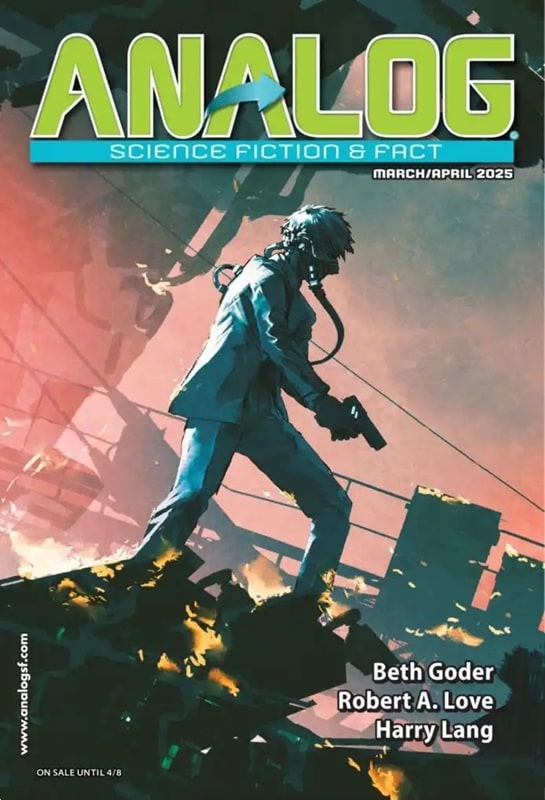
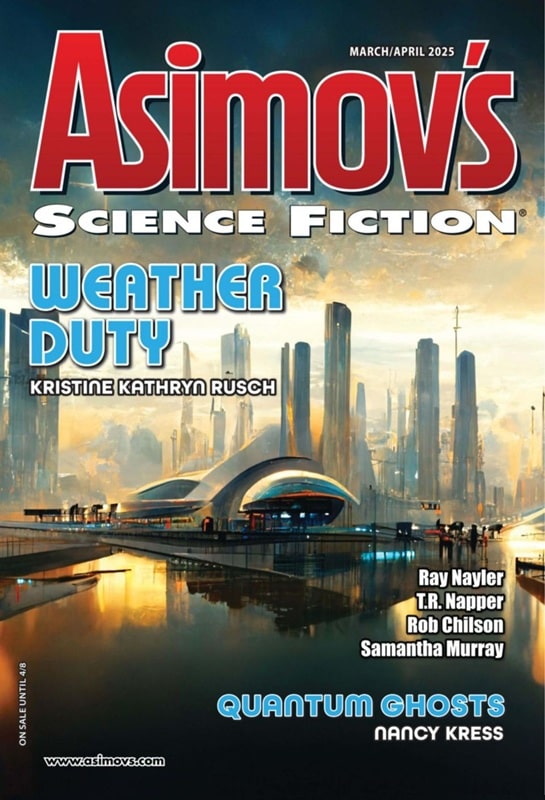
March-April 2025 issues of Analog Science Fiction & Fact
and Asimov’s Science Fiction. Cover art by Shutterstock
The big news this month is that all three print science fiction magazines, as well as the mystery magazines owned by Penny Press, have been sold to a new buyer, a consortium of fans who have have ambitions to maintain and grow all five. Here’s an excerpt from the announcement at Locus Online.
Alfred Hitchcock’s Mystery Magazine, Analog Science Fiction and Fact, Asimov’s Science Fiction, Ellery Queen Mystery Magazine, and The Magazine of Fantasy & Science Fiction have been acquired by Must Read Magazines, a division of a new publishing company, Must Read Books Publishing. All editorial staff from the magazines have been retained in the acquisitions… Must Read Magazines is financially backed by a small group of genre fiction fans. A major investor and board advisor is Michael Khandelwal, the founder of a writing nonprofit and Virginia’s Mars Con toastmaster.
Read all the details, including quotes from Asimov’s editor Sheila Williams, Analog editor Trevor Quachri, and F&SF publisher Gordon Van Gelder, at Locus Online.
Tentatively, I’m willing to believe this is Good News. It makes sense to have all five magazines under one roof, and the recent collapse of F&SF‘s publishing schedule (only one magazine shipped last year) seemed to auger its imminent demise. Though change is rarely good with magazines, and Dell Magazines/Penny Press has been a stalwart home for Asimov’s and Analog for over three decades, since 1992, keeping the magazines healthy and alive through decades of turmoil in the magazine business.
But there’s certainly an argument to be made that the magazines could benefit from a change, and sharing a single home. I’ve seen no announcement on when F&SF will resume publication, and I eagerly await news of the first issues of Asimov’s and Analog from the new publisher, due next week (April 8). Fingers crossed the transition will be smooth.
In the meantime, we’ve got the last Dell Magazine issues of Asimov’s Science Fiction and Analog Science Fiction & Fact in hand, and they’re just as enticing as usual, with contributions from Kristine Kathryn Rusch, Nancy Kress, Marissa Lingen, Ray Nayler, T.R. Napper, Rob Chilson, Robert A. Love, Beth Goder, Anthony Ha, and many more.
Victoria Silverwolf at Tangent Online enjoyed in the latest Asimov’s.
“Weather Duty” by Kristine Kathryn Rusch takes place in the domed city of Las Vegas in a near future where citizens are required to spend time on government committees, analogous to jury duty. The main character serves on the committee that controls the weather. She and a local celebrity are attacked by thugs with high-tech weapons, for reasons that only become clear at the end.
This novella is effective as crime/suspense fiction and as a portrait of a possible future. The speculative technology and the way the government committees work are quite convincing, both in their advantages and their limitations. The protagonist, a dancer and choreographer, is a plausible action heroine, able to deal with a crisis in a believable fashion while remaining a realistic character with whom one can empathize.
“The Hidden God” by T. R. Napper alternates sections of narrative describing unpleasant and often deadly fates facing various rich and famous characters with sections dealing with a philosopher interacting with a highly advanced artificial intelligence. It soon becomes obvious that the powerful AI is attacking people whom it believes are causing enough harm to others that they should be rendered powerless or even killed. It turns out that there is an unexpected connection between the AI and the philosopher. Often as vivid and visceral as any blood-soaked thriller, this novella also raises the age-old issue of whether it is acceptable to help many by harming few. The author doesn’t pretend to solve this ancient dilemma, but uses it to delve into the character of the philosopher.
The drug mentioned in the title of “The Demon of Metrazol” by Ray Nayler is a real one, formerly used to treat mental patients by inducing violent convulsions. In the 1930’s, a woman works at a mental hospital by photographing patients before, during, and after these grim treatments. The patients always display extreme terror when the drug is administered. The story’s ending offers hints as to why this occurs. This is a subtle and unnerving horror story, using disturbing facts of the past to create a growing sense of fear.
The narrator of “The Mystery of My Death” by Rob Chilson is a time traveler who discovers his own grave in the future. He ponders exactly when he might die, goes on a mission to correct an error made in the recent past, and makes a major change in his life. Despite the title and a premise that might seem morbid, this is an upbeat, optimistic story that emphasizes life rather than death.
In “Cryptid or Your Money Back” by Misha Lenau, people can buy kits that allow them to remove their human bodies and become mythical creatures, then switch back whenever they please. The narrator becomes a chupacabra, the so-called goatsucker of Latin American folklore. Reluctant to return to human form, or to socialize with other people who have changed their bodies in this way, the narrator eventually discovers what is really desired.
Read Victoria’s complete review here.
The new Analog is reviewed by the ever reliable Sam Tomaino at SFRevu. Here’s a sample.
The new short fiction begins with the novella, “Murder on the Eris Express” by Beth Goder. Who killed Captain Jeremy on the Eris Express when the sensors of Mo, the ship’s AI were shut off? Mo, who always wanted to be a detective, investigates. Fun story to begin the issue!
“Not Optimus Prime” by Lorraine Alden. Vera is using a QR59 quantum computer to find a large prime number. She actually succeeds at that and something more, but the presence of a man delivering helium puts her in peril. Exciting story.
“It Eats Metal” by Mark Ferguson. Our narrator and his friends investigate a swamp where two students and a dog had disappeared and woman’s legs had been severely injured. What do they find? Nice mystery.
“Those Other Replicator Manufacturers Are Ripping You Off” by Jon Lasser. Some guidelines on getting replicators for your space ship. Amusing.
“Concerning the Multiplicity of Children in Central Florida’s Suburbanized Wetlands” by Ichabod Cassius Kilroy. Mori is almost nine years old and her brother, Orion, is almost five. Each morning she sees ghosts of their possible futures, some good, some bad. Interesting.
“The Code of His Life” by Owen Leddy. Ava and her friend, Alejandro, are in the grey market drug-hacking business. He is offered a job for a big legit firm and takes it. But when he drops dead, Ava knows he was murdered. She investigates and finds a way to have justice. Good story!
“Heat Death” by Kate McLeod. Detective Lidia is called in by her old friend, Chloe, to investigate a man who died of heat in the middle of the Texas desert. What she finds out is tragic. Poignant tale.
The fiction concludes with the novella, “The Return of Tom Dillon” by Harry Lang. This is a follow-up to the novelette, “Hothouse Orchids” by Harry Lang in the January/February 2023. Detective Hector Kovack returns to investigate another murder connected to the group behind the previous one. Does it have a connection to the return of an old friend working on a political campaign? Some good old hard-boiled detective stuff here. I hope I see more.
Yes, there was a crime theme to most of the stories of this issue, I almost thought I was reading Ellery Queen’s Mystery Magazine!
Read Sam’s full review here.
Here’s all the details on the latest SF print mags.
[Click the images for bigger versions.]
 Analog Science Fiction & Science Fact, March-April 2025 contents
Analog Science Fiction & Science Fact
Analog Science Fiction & Science Fact, March-April 2025 contents
Analog Science Fiction & Science Fact
Editor Trevor Quachri gives us a tantalizing summary of the current issue online, as usual.
Normally, we think of the March/April issue as something of our “humor and hoaxes issue,” in keeping with the seasonal spirit of April Fool’s Day. This time, however, we’re focusing on another important day in April: Tax Day. Yes, the only things certain in life are death and taxes, and the bulk of our stories lie at the juncture where death and money meet: crime.
Our lead story from Beth Goder, “Murder on the Eris Express,” might evoke familiar images of a mustachioed Belgian on a train, but the parallels end at the title — I promise you’ve never seen a “detective” quite like this. And there are plenty more SF/crime pieces to accompany this one, including:
“The Return of Tom Dillon,” a sequel to Harry Lang’s excellent future noir, “Hothouse Orchids” [January/February 2023]; the opposite of a locked-room mystery, in “Heat Death,” by Kate MacLeod; the definition of a gambling problem, in John Markley’s “In the Hole”; and more.
Plus, of course, we have to include at least some lighter fare, such as “A Whole Generation” by Timons Esias and “Mr. Palomar Goes to Space” by Hayden Trenholm, just for starters, plus our fact article, “Reflections on Mirror Life,” by Robert A. Love — think biochemistry, not Star Trek — and all our regular columns, as well as maybe a surprise or two!
Here’s the full TOC.
Novellas
“Murder on The Eris Express,” Beth Goder
“The Return of Tom Dillon,” Harry Lang
Novelettes
“The Code of His Life,” Owen Leddy
“Heat Death,” Kate MacLeod
Short Stories
“Not Optimus Prime,” Lorraine Alden
“Ti Eats Metal,” Mark Ferguson
“To Reap, To Sow,” Lyndsey Croal
“The Emergency Contact,” Arendse Lund
“Those Other Replicator Manufacturers Are Ripping You Off,” Jon Lasser
“Track Eats Track,” Avi Burton
“Concerning the Multiplicity of Children in Central Florida’s Suburbanized Wetlands,” Ichabod Cassius Kilroy
“Palomar Goes to Space,” Hayden Trenholm
“Echo, Write to All,” Nate Givens
“The Timecop and the Timesocial-worker,” S.L. Harris
“If the Weather Holds,” Marissa Lingen
“Murder With Soft Words,” Mike Duncan
“In the Hole,” John Markley
Probability Zero
“A Whole Generation,” Timons Esaias
Flash Fiction
In Her Element, M.t. Reiten
Science Fact
Reflections On Mirror Life, Robert A. Love
Poetry
The Dark Matter Storm, Deborah L. Davitt
Precocious Child, Alexander Senko
Reader’s Departments
Guest Editorial: Seeking Scientific Common Ground, Even On Guns, Richard A. Lovett
In Times To Come
The Alternate View, John G. Cramer
The Reference Library, Rosemary Claire Smith
Brass Tacks
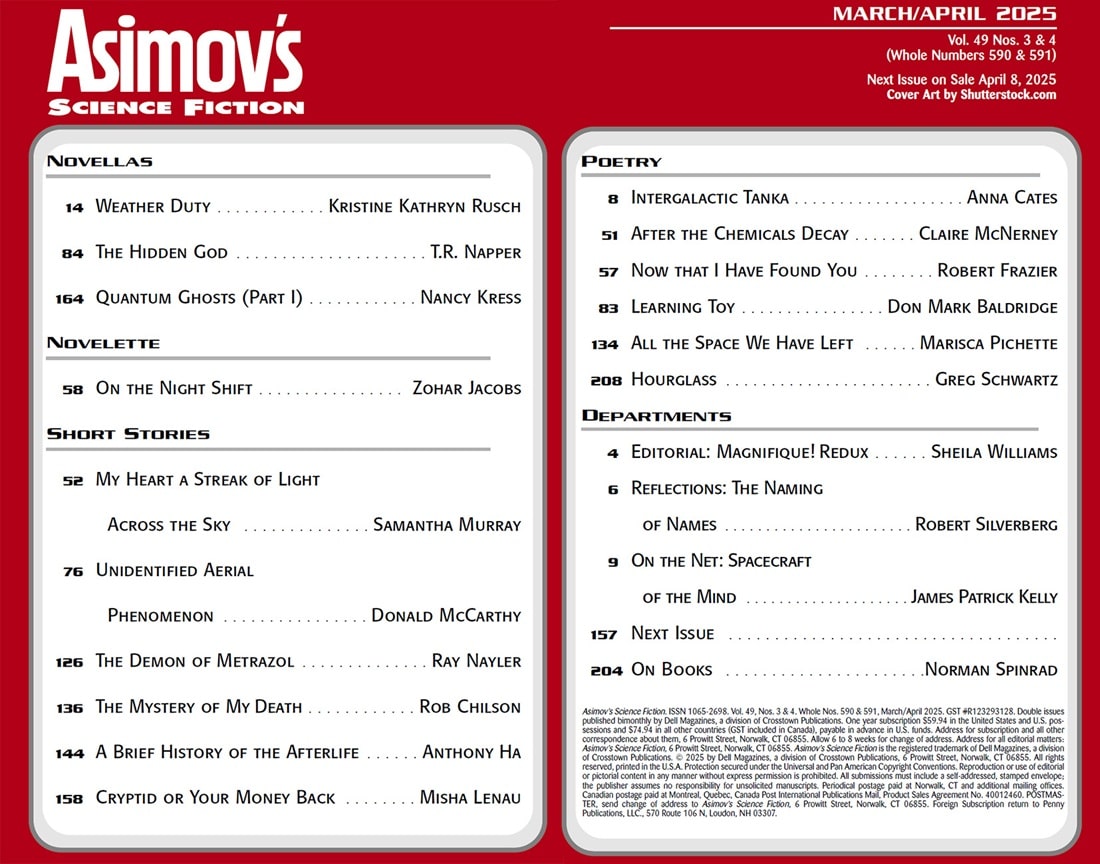 Asimov’s Science Fiction, March-April 2025 contents
Asimov’s Science Fiction
Asimov’s Science Fiction, March-April 2025 contents
Asimov’s Science Fiction
Sheila Williams provides a handy summary of the latest issue of Asimov’s at the website.
Our March/April 2025 issue is bursting with fiction. We have three exciting novellas stuffed into our pages. Kristine Kathryn Rusch opens the issue with a thrilling story about “Weather Duty”; T.R. Napper brings us an intense tale about a rogue AI in “The Hidden God”; and Nancy Kress bookends the issue with Part 1 of a giant novella that exposes the terrifying consequences of coexistence with “Quantum Ghosts”!
Ray Nayler reveals the true horror behind “The Demon of Metrazol”; Rob Chilson attempts to resolve “The Mystery of My Death”; new author Anthony Ha gives us “A Brief History of the Afterlife”; new to Asimov’s author Samantha Murray spins the bittersweet tale of “My Heart a Streak of Light Across the Sky”; and new author Donald McCarthy shocks us with truths about “Unidentified Aerial Phenomenon.” Zohar Jacobs returns to our pages with a tense story about what it means to be “On the Night Shift,” and Misha Lenau makes good on the promise of “Cryptid or Your Money Back.”
Robert Silverberg’s Reflections explains “The Naming of Names”; James Patrick Kelly’s On the Net considers “Spaceships of the Mind”; and Norman Spinrad’s On Books muses about “Speculative Literature?” Plus we’ll have an array of poetry you’re sure to enjoy.
Here’s the complete Table of Contents.
Novellas
“Weather Duty” by Kristine Kathryn Rusch
“The Hidden God” by T.R. Napper
“Quantum Ghosts” (Part I) by Nancy Kress
Novelette
“On the Night Shift” by Zohar Jacobs
Short Stories
“My Heart a Streak of Light Across the Sky” by Samantha Murray
“Unidentified Aerial Phenomenon” by Donald McCarthy
“The Demon of Metrazol” by Ray Nayler
“The Mystery of My Death” by Rob Chilson
“A Brief History of the Afterlife” by Anthony Ha
“Cryptid or Your Money Back” by Misha Lenau
Poetry
Intergalactic Tanka by Anna Cates
After the Chemicals Decay by Claire McNerney
Now that I Have Found You by Robert Frazier
Learning Toy by Don Mark Baldridge
All the Space We Have Left by Marisca Pichette
Hourglass by Greg Schwartz
Departments
Editorial: Magnifique! Redux by Sheila Williams
Reflections: The Naming of Names by Robert Silverberg
On the Net: Spacecraft of the Mind by James Patrick Kelly
Next Issue
On Books by Norman Spinrad
Analog, Asimov’s Science Fiction and The Magazine of Fantasy & Science Fiction are available wherever magazines are sold, and at various online outlets. Buy single issues and subscriptions at the links below.
Asimov’s Science Fiction (208 pages, $8.99 per issue, one year sub $47.97 in the US) — edited by Sheila Williams
Analog Science Fiction and Fact (208 pages, $8.99 per issue, one year sub $47.97 in the US) — edited by Trevor Quachri
The Magazine of Fantasy & Science Fiction (256 pages, $10.99 per issue, one year sub $65.94 in the US) — edited by Sheree Renée Thomas
The March-April issues of Asimov’s and Analog were on sale until April 8. See our coverage of the January-February issues here, and all our recent magazine coverage here.
Women in SF&F Month: Kamilah Cole
Women in SF&F Month officially starts today with a guest post by Kamilah Cole! Her debut novel and the first book in her Divine Traitors trilogy, So Let Them Burn—which she described as being “about sisterhood, chosen ones, dragons, anti-imperialism, anti-colonialism, and the aftermath of war” in a post on Goodreads—was a National Indie bestseller for multiple weeks and a nominee for the Goodreads Choice Awards for Young Adult Fantasy. It was recently joined by the conclusion to the series, […]
The post Women in SF&F Month: Kamilah Cole first appeared on Fantasy Cafe.Teaser Tuesdays - Vexing the Grumpy Orc
"Almost done." The witch's smug superiority crawled under my skin. "Unless you prefer to keep glaring holes in my back?"
(page 1, Vexing the Grumpy Orc by Chloe Graves)
---------
Teaser Tuesdays is a weekly bookish meme, previously hosted by MizB of Should Be Reading. Anyone can play along! Just do the following: - Grab your current read - Open to a random page - Share two (2) “teaser” sentences from somewhere on that page BE CAREFUL NOT TO INCLUDE SPOILERS! (make sure that what you share doesn’t give too much away! You don’t want to ruin the book for others!) - Share the title & author, too, so that other TT participants can add the book to their TBR Lists if they like your teasers!
Book review: A Drop of Corruption (Shadow of the Leviathan #2) by Robert Jackson Bennett

ABOUT THE AUTHOR: Robert Jackson Bennett is a two-time award winner of the Shirley Jackson Award for Best Novel, an Edgar Award winner for Best Paperback Original, and is also the 2010 recipient of the Sydney J Bounds Award for Best Newcomer, and a Philip K Dick Award Citation of Excellence. City of Stairs was shortlisted for the Locus Award and the World Fantasy Award. City of Blades was a finalist for the 2015 World Fantasy, Locus, and British Fantasy Awards. His eighth novel, FOUNDRYSIDE, will be available in the US on 8/21 of 2018 and the UK on 8/23.
Publisher: Del Rey (April 1, 2025) Length: 458 Formats: audiobook, ebook, hardcover
Robert Jackson Bennett has done it again. A Drop of Corruption takes everything that made The Tainted Cup great (impossible murders, weird biology, razor-sharp wit) and somehow makes it even better. There’s a new impossible crime, more unsettling biology, and, most importantly, more Ana Dolabra - the world’s strangest mind.
This time around, Ana and her long-suffering assistant Dinios Kol are sent to the empire’s edges to investigate a treasury officer’s disappearance. And let me tell you - it’s a gruesome murder, because if there’s one thing Bennett knows how to do, it’s making sure every crime scene sticks in your brain. This one involves dismemberment, vanished body parts, and a killer who seems to walk through walls.
Ana solves the surface-level mystery in about five minutes, but the deeper they dig, the more tangled the case becomes. The stakes turn shockingly high. If they fail, the entire empire could collapse, and leave the world defenseless against the leviathans. No pressure. Someone out there is playing a game Ana isn’t used to losing, and Din finds himself torn between his duty as her “engraver” and his growing realization that being an investigator might not be the life he truly wants.
Now, for me the series works because we follow a brilliant and fascinating character (Ana) through the eyes of a much more bland one (Din). Din is to Ana what Watson was to Sherlock - a trusted assistant with some personality but not enough charisma to carry the series. A Drop of Corruption gives us glimpses into Ana’s past and hints at what she truly is. She’s still an enigma, but things get much clearer and much more exciting. Din, meanwhile, starts questioning his place in all of this. He signed up to be Ana’s eyes and ears to pay off his father’s debts, but as he gets drawn deeper into the empire’s ugly truths, he starts to wonder if he should be fighting to save it or choose a simpler and more profitable path.
The world-building continues to impress and remains one of the most inventive things I’ve ever read. The concept of Leviathans and the horrifying ways in which their blood transforms environment is cool. Then we have the Shroud - a living, organic space with peculiar properties. And the new characters fit right into this strange, unsettling world. Mala, for example, has an enhanced sense of smell (and more), which makes her an excellent investigator but also means she’s experiencing reality in ways that most people can’t understand.
Since Bennett doesn’t do one-note villains, the antagonist is ruthless, brilliant, and broken. Their backstory is a slow-burn tragedy that creeps up on you. If I had to nitpick, I’d say that the book is sometimes too detailed and repetitive in the middle. But honestly, when the writing is this good, why would I want to nitpick?
Ultimately, I’m satisfied, impressed, and desperately hoping we get another one in the series. Because if Bennett keeps building on this foundation, we might just be looking at one of the best fantasy mystery series of the decade.
Book Review: A Drop of Corruption by Robert Jackson Bennett
I received a review copy from the publisher. This does not affect the contents of my review and all opinions are my own.
 A Drop of Corruption by Robert Jackson Bennett
A Drop of Corruption by Robert Jackson Bennett
Mogsy’s Rating: 5 of 5 stars
Genre: Fantasy, Mystery
Series: Book 2 of Shadow of the Leviathan
Publisher: Del Rey (April 1, 2025)
Length: 480 pages
Author Information: Website
Last year, Robert Jackson Bennett’s The Tainted Cup was one of my favorite reads, and it appears I wasn’t alone in that sentiment based on all the love that’s been showered on the book from across the board. Naturally, its sequel Drop of Corruption became one of my most anticipated releases in 2025, and believe me, I had high expectations. Still, somehow they were exceeded in every way.
This time, Ana Dolabra and her assistant Dinios Kol find themselves dispatched to Yarrowdale, a distant canton situated on the edge of the Khanum Empire, where much of the population takes pride in its independence. Imperial authority might not hold much sway here, but when one of their treasury officers disappears suddenly, the investigators want to know how and why. But what initially appears to be a missing person case quickly turns into a murder investigation as body parts are discovered, and everywhere Ana and Din turn, mysterious forces seem bent on standing in their path.
Eventually, our protagonists determine that their missing official is not just a victim but a casualty in a far greater conspiracy. With tensions already running high in Yarrowdale over the canton’s impending integration into the Khanum, the implications of their work become even more dire. Din and Ana follow clues to the Shroud, where fallen leviathans—gargantuan monsters that live beyond the massive seawalls—are processed to harvest the rare magic within them that helps power the empire. The subsequent collapse would be devastating and wide-ranging should this major industry falter, and time is running out to get to the bottom of the mystery.
What can I say, other than I loved everything about this book! While the quality of sequels can be touch and go, Bennett took what worked in The Tainted Cup and either carried on those trends or made them even better. Nothing makes me happier than a fantasy mystery I can completely lose myself in, and A Drop of Corruption flawlessly balances its detective elements with its ever-expanding world-building to deliver a riveting plot that gripped me from the first page and never let up. Take the best parts of the epic fantasy and police procedural genres, blend them together, and this is what you get.
But as I wrote in my review for the first book, the stars of the show are Din and Ana, and that remains true. I was happy to see that the Holmes/Watson dynamic is as strong as ever, which really drives the series with their contrasting personalities. The two of them have grown closer since the beginning of their partnership, but even as some of Din’s idealism has given way to a pragmatism that makes him more competent, he still frequently suffers the brunt of Ana’s sharp wit, impatience, and complete disregard for social niceties. But if Din is the heart, Ana is the razor-sharp mind—a force to be reckoned with, and utterly fascinating to watch. And yet, for all her intellect, she is not infallible, which becomes dangerously clear as this tough case exposes the cracks in her armor.
Of course, what further elevates this novel beyond a clever mystery fantasy story is its world-building. Beyond the storytelling, A Drop of Corruption excels in expanding what we know of the Khanum Empire, in areas like politics, culture, and history. The magic system is not just window dressing; it’s infused into the very bones of these books, and into the very mechanics of our characters’ investigation. The series’ name is Shadow of the Leviathan, and it appears with each installment, we are witnessing just how integral these creatures are to everything we know about this world.
By the time we got to the resolution, I was completely sold. Robert Jackson Bennett has proven yet again what a talented storyteller he is, by gifting fantasy mystery fans with a wildly imaginative series that is as intricate as anything found in a classic whodunit. I have to say, The Tainted Cup set a high bar, but A Drop of Corruption sails over it with ease. This trilogy is shaping up to be an all-time favorite, and you can bet I’ll be first in line when the final volume drops.
![]()
![]()
More on The BiblioSanctum:
Review of The Tainted Cup (Book 1)
EXCLUSIVE COVER REVEAL: The Sanguine Sands (The Sharded Few #2) by Alec Hutson

(THE SANGUINE SANDS COVER ART by Mansik Yang/YAM)
Preorder The Sanguine Sands over HEREAdd The Sanguine Sands on Goodreads
Today we have the unbridled joy of revealing the cover for THE SANGUINE SANDS, book #2 of the Sharded Few series by Alec Hutson. Featuring scintillating art by Mansik Yang (Yam) & snazzy design-typography by the under-appreciated & underrated Shawn T. King.
The book will be releasing on April 7th & you can check out the gorgeous cover and its blurb below:

Official Book Blurb: The Heart of the Heart has been found.
In the ruined palace of the Radiant Emperor the Light shard had been hidden for a thousand years, but now a sliver of its power has entered the flesh of Heth Su Canaav. Once Hollow, he has been reborn as one of the Sharded Few. Its discovery will shake the world . . . if anyone lives to tell of its existence.
For hunters stalk the refugees from the Duskhold. Powerful Sharded, unnatural sorcerers, and creatures that they cannot yet comprehend. Deryn and Heth must flee to the ancient city of Karath, where they hope answers await about who was behind the attempt to murder Rhenna Shen, and why one of the mysterious Elowyn directed them to find the House of Last Light.
The north lurches towards war, Shadow and Storm closing around the flickering Flame, while the Blood scheme in the black ziggurats of the Sanguine City, and far away something stirs in the frozen wastes where the disciples of Ice cling to an ancient faith . . .
Introducing Women in SF&F Month 2025
This April is the fourteenth annual Women in SF&F Month here at Fantasy Cafe, starting tomorrow! For the last several years, this month has been dedicated to highlighting some of the many women doing wonderful work in fantasy and science fiction, and the site will be featuring guest posts by some of these writers throughout April. There will be new posts appearing Monday–Thursday throughout most of the month, including a book giveaway this week. As always, guests will be discussing […]
The post Introducing Women in SF&F Month 2025 first appeared on Fantasy Cafe.Spotlight on “The Lilac People” by Milo Todd
The Lilac People is a moving and deeply humane story about a trans man who…
The post Spotlight on “The Lilac People” by Milo Todd appeared first on LitStack.
Six Things I Think I Think: March 2025
 Readers of my weekly column (both of you) know that I quite enjoying giving my opinion on a wide range of topics. I’ll cut the normal ten down to five this time, but it’s been two months since I’ve expounded thus. And that’s at least one month too long, right? So…
Readers of my weekly column (both of you) know that I quite enjoying giving my opinion on a wide range of topics. I’ll cut the normal ten down to five this time, but it’s been two months since I’ve expounded thus. And that’s at least one month too long, right? So…
So, I think that:
1) DAREDEVIL IS EXCELLENT
I didn’t like the Ben Affleck Daredevil movie back in 2003. Or the associated 2005 Elektra movie with Jennifer Garner. And a blind, lawyer, vigilante, just didn’t appeal to me. I’d never read any of the comics, so no nostalgia tie, either.
I skipped the three-season streaming series which dropped back in 2015. And after trying a couple episodes of Jennifer Jones, I passed on the whole The Defenders thing.
For some reason, I decided to watch the first episode of the new reboot, Daredevil: Reborn. Don’t know why, but I did. And man, it was terrific!!! I did the three episodes which had dropped, and I was hooked. I went back and just finished watching season one of the original series. Wow! I’ve started season two.
This show is darker than what I like to watch. And the lighting and visual tone reflects the emotional vibe. Which is in tune with a blind vigilante, I guess. But this is one of my favorite Marvel streaming series (no timeline nonsense probably helps).
And Vincent D’Onofrio as Kingpin is a home run. I liked his appearance at the end of Hawkeye. But he was a MASSIVE disappointment in Echo (as was that show itself). He was emasculated and was a touchy-feely wimp; nothing like the Kingpin I am discovering in Daredevil, and Reborn.
This was a totally unexpected surprise, and I’m really enjoying my discovery of the original show. And Charlie Cox is another actor I had no idea was British, as I watched him (Hugh Laurie, and Marsha Thomason, are two more).
2) YOU SHOULD READ JOHN MADDOX ROBERTS’ SPQR SERIESI’ve talked about this in a couple prior posts. Roberts wrote eight of the Tor Conan books, and he’s easily one of the best – if not THE best – of the authors in that series. His Conan the Rogue is an homage to Dashiell Hammett, and my favorite Conan pastiche.
 From 1990 through 2010, he wrote thirteen historical mysteries set in Ancient Rome. SPQR (Senatus Populusque Romanus – The Roman Senate and People) feature Decius Caecilus Metellus telling stories from his life, written during Caesar’s reign.
From 1990 through 2010, he wrote thirteen historical mysteries set in Ancient Rome. SPQR (Senatus Populusque Romanus – The Roman Senate and People) feature Decius Caecilus Metellus telling stories from his life, written during Caesar’s reign.
Many Romans of the time, like Cicero, Pompey, and Crassus, are characters in the stories. I think Roberts does a fantastic job of creating Ancient Rome for the reader. I don’t believe he was too free with making up things. I feel like we’re getting a pretty good look at the time.
Decius essentially solves a murder as a function of his government position at the time (they change over the years), each novel. Sadly, Roberts passed away in May of last year, and I did not start the series until shortly after that. I just finished the thirteenth and final audiobook – and I immediately went back and started the first book again, The King’s Gambit. This has become one of my favorite series’.
John Lee is the PERFECT narrator for the novels, and he reads all of them. I enjoyed listening to him narrating every single one.
There are eight short stories, which I would really like to see someone collect and put out together. I have not read any of them, so I’m kinda excited at the thought even though I’ve read all the novels, there’s still a little more SPQR out there for me.
I’ve read that he had been working on a fourteenth novel over the years. I’d certainly like to see someone with the skills, to complete it.
I like a good historical novel, but I’m more likely to read Jack Higgins, or Len Deighton. I read fantasy, not ancient history fiction (Scott Oden’s Men of Bronze is superb). But I am hooked on these and will be listening to the entire thing twice in less than a year. Check out that first novel – read or listen – and treat yourself.
3) WHEN YOU DON’T LIKE THE NARRATOR OF AN AUDIOBOOK…I mentioned in #2 that John Lee is the perfect narrator for the SQPR books. I’ve commented a before on a couple audiobooks where the narrator ruined them for me: Even made them unlistenable.
I have been spacing out Steven Erikson’s Malazan series for well over a decade. Maybe two. I like it. But it’s deep and complex. And it’s dark. I have to be in a certain mood. I’d been on book eight, Toll of the Hounds, for several years.
I’ve talked about how audiobooks let me get to things I wouldn’t have time for, otherwise. I grabbed book eight and nine on an Audible sale. Toll of the Hounds is 44 hours long!!!
And quite frankly, I don’t like Michael Page’s narration. The whole thing feels there was a Malazan reading by the inhabitants of a senior center. Hey – I’m 58. I’m old. But 44 hours of listening to a reader you don’t like, is HARD. I still have 16 hours left.
I will finish this because I want to read the entire Malazan series. I like Ian C. Esslemont’s Malazan books as well, and I like the ones I listened to by John Banks. I wish he had read Erikson’s.
I will probably try to find the time to read book nine (I have the paperback). But reading a single 1,200 page paperback – especially a ‘heavy’ one, just isn’t on my radar these days. Even an okay narrator is workable. But when you don’t actually like the reader, it’s quite the uphill slog.
4) SHOHEI OTANI IS A THE RARE BASEBALL POP CULTURE ICON We are used to pop icons in our culture. They change over time, of course. Whatever you may think of Taylor Swift, she is larger than life. Seventy-ish years ago, The Beatles conquered the world. It seems like it’s more likely to be a singer, than an actor, these days. Tiger Woods, Lebron James – athletes can enter this realm as well.
We are used to pop icons in our culture. They change over time, of course. Whatever you may think of Taylor Swift, she is larger than life. Seventy-ish years ago, The Beatles conquered the world. It seems like it’s more likely to be a singer, than an actor, these days. Tiger Woods, Lebron James – athletes can enter this realm as well.
Baseball players don’t really hit this stratosphere. Babe Ruth was certainly one. Derek Jeter had a bright spotlight, but not Taylor Swift level. Shohei Otani is an elite baseball player. He’s recovering from an arm injury, but he is both a Cy Young caliber pitcher, and he rewrote the offense record books ls year, when he couldn’t pitch. He’s more than a generational player – he’s a century one.
But he is THE icon in Japan. People gather together in the morning, to watch Dodgers games, in Japan. MLB sent the Dodgers and Cubs to Tokyo for two official games, a few weeks before ‘regular’ Opening Day in America. Reading reports about the trip, Ohtani in Japan is like Swift in America. He is a larger than life celebrity. Ohtani is a huge star here in America, but baseball has continued to be less popular than football, and basketball. Opening week is competing with March Madness right now. But Ohtani is the biggest name in baseball. In Japan, he’s a superstar.
Fortnite rolled out an Ohtani skin last week (I bought it!). He’s in his Dodgers uniform, and he’s a baseball-themed samurai. Watching the US opener the other night, they showed the Fortnite skin on the TV Screen, and when he came up to bat, they called him Mr. Fortnite.
Shohei Otani is one of the few players that’s bigger than the game. And in Japan, he could not be a bigger cultural star.
5) CAPTAIN AMERICA: BRAVE NEW WORLD WAS WELL DONEHey Marvel – you can make a good movie that’s only two hours long. Thanks for actually trying it. The latest Captain America movie wasn’t fluffed out. The story was tight a just under two hours, and it didn’t feel like an effort to get all the way through.
It was a sequel to the Edward Norton Hulk (which I had never bothered to watch. Not a prerequisite, but I did watch it after, and it would have helped some. It also built out a bit from the The Falcon and the Winter Soldier.
This wasn’t ‘the biggest’ Avengers-related movie. But it was a good one. I’d like to see more shorter, focused, flicks. It had been out a month when I saw it, and my son and I were the ONLY people in the theater on a weekday afternoon. Those factors considered, I was still pretty surprised. We’re talking a Marvel movie.
6) THUNDERBOLTS LOOKS LIKE LOADS OF FUNI don’t know anything about this group, other than the bits the movies and ‘extra scenes’ were dropping, as Julia Louis-Dreyfuss was up to something. I saw the trailer when I watched the new Captain America. Oh man, this movie looks FUN! I totally enjoyed the trailer, and my son and I will be seeing this in the theater. I’m really looking forward to it.
In fact, this trailer was far more enticing than the one for the new Fantastic Four movie. Which, frankly, looked boring. I’ve written here that I enjoyed the Jessica Alba Fantastic Four movie more than most of my friends. The sequel was meh, but still okay.
I will probably watch the new one – I still haven’t bothered with the 2015 version – at home. But the trailer didn’t intrigue me at all. I forgot it as soon as I saw Thunderbolts. Scarlett Johansson in the new Jurassic Park movie looked way better than The Fantastic Four.
Prior Ten Things I Think I Think
Ten Things I Think I Think (January 2025)
Ten Things I Think I Think (December 2024)
Nine Things I Think I Think (October 2024)
Five More Things I Think: Marvel Edition (September 2024)
Ten Things I Think I Think: Marvel Edition ( September 2024)
Five Things I Think I Think (January 2024)
Seven Things I Think I Think (December 2023)
Talking Tolkien: TenThings I Think I Think (August 2023)
A (Black) Gat in the Hand: Ten Things I Think I think (August 2023)
5 More Things I Think (March 2023)
10 Things I Think I Think (March 2023)

Bob Byrne’s ‘A (Black) Gat in the Hand’ made its Black Gate debut in 2018 and has returned every summer since.
His ‘The Public Life of Sherlock Holmes’ column ran every Monday morning at Black Gate from March, 2014 through March, 2017. And he irregularly posts on Rex Stout’s gargantuan detective in ‘Nero Wolfe’s Brownstone.’ He is a member of the Praed Street Irregulars, founded www.SolarPons.com (the only website dedicated to the ‘Sherlock Holmes of Praed Street’).
He organized Black Gate’s award-nominated ‘Discovering Robert E. Howard’ series, as well as the award-winning ‘Hither Came Conan’ series. Which is now part of THE Definitive guide to Conan. He also organized 2023’s ‘Talking Tolkien.’
He has contributed stories to The MX Book of New Sherlock Holmes Stories — Parts III, IV, V, VI, XXI, and XXXIII.
He has written introductions for Steeger Books, and appeared in several magazines, including Black Mask, Sherlock Holmes Mystery Magazine, The Strand Magazine, and Sherlock Magazine.
You can definitely ‘experience the Bobness’ at Jason Waltz’s ’24? in 42′ podcast.
Sword & Sorcery on a Post-Apocalyptic Earth: Blackmark by Gil Kane
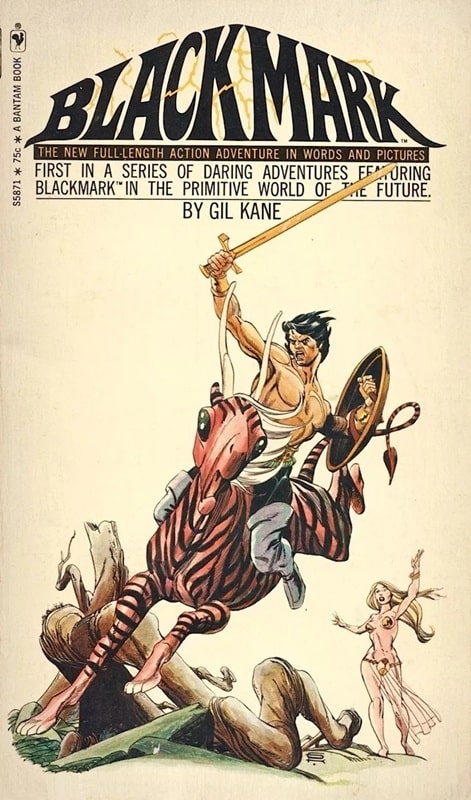
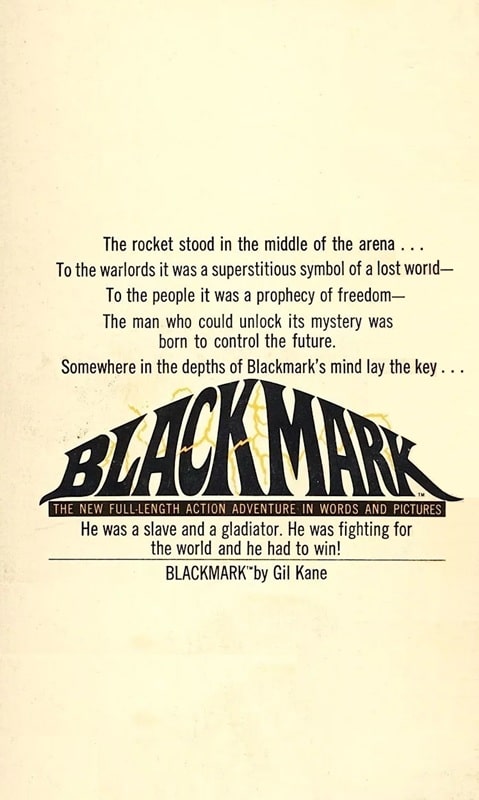
Blackmark by Archie Goodwin and Gil Kane (Bantam Books, January 1971). Cover by Gil Kane
As I’ve mentioned before, I didn’t grow up with comics. They weren’t available in my small, rural town of Charleston, Arkansas in the 1960s and 70s. The first store to carry them appeared around ’74 and had a small spinner rack with a dozen or so titles. By then I was already reading regular books and the comics, while they had interesting art, had much less story than books. I bought a few but never got hooked and knew virtually nothing about any comics creator.
As an adult in my fifties, I watched a movie called The Watchmen, which was very good, and I bought the original graphic novel by Alan Moore. I was blown away by the complex storytelling and started buying other graphic novels. I finally started to learn about some of the great comic book creators over the years. I still don’t consider myself a comic book reader but I keep an eye out for items that might interest me. That’s how, in 2019, I found a cool little book called Blackmark, “by Gil Kane.”
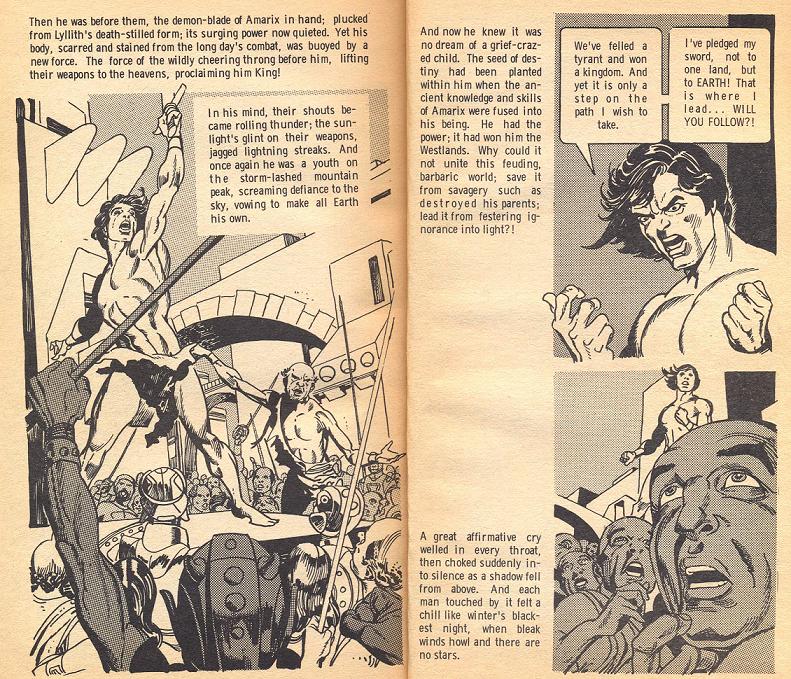 Interior pages from Blackmark. Art by Gil Kane
Interior pages from Blackmark. Art by Gil Kane
Gil Kane (1926 – 2000) was born in Latvia as Eli Katz but immigrated with his family to the US at about 3. He lived in Brooklyn and started working in comics at an early age. By 16, he’d found full-time employment and quit high school.
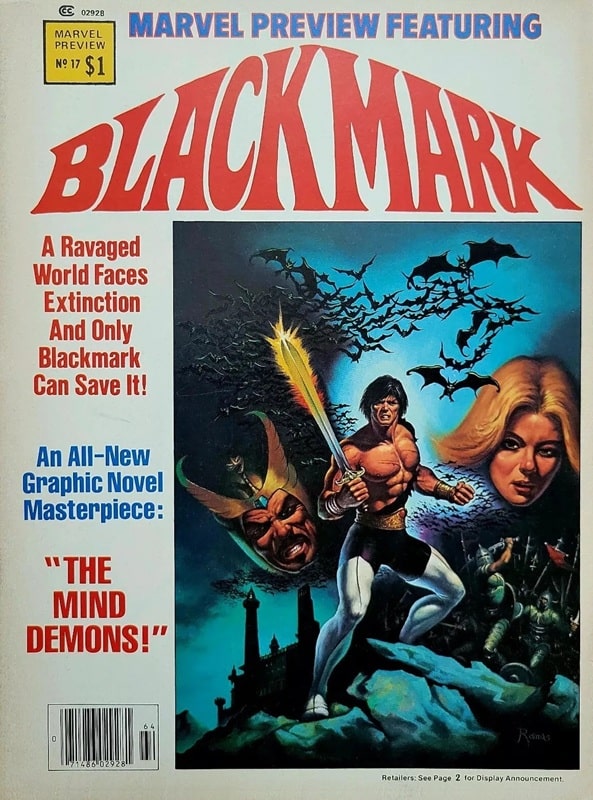 Marvel Preview #17, containing the sequel, Blackmark: The Mind Demons (Marvel Comics, Winter 1979). Cover art by Romas Kukalis
Marvel Preview #17, containing the sequel, Blackmark: The Mind Demons (Marvel Comics, Winter 1979). Cover art by Romas Kukalis
He’s best known for helping create Green Lantern and Iron Fist, none of which I’ve ever read. In 1971, working with a scripter named Archie Goodwin, he created Blackmark (from Bantam), one of the earliest graphic novels. It’s set on a post-apocalyptic Earth and is more sword & sorcery than sword & planet, but it has that exotic S&P feel I crave.
From what I understand, Kane created the setting and characters and did all the art. He provided an outline for the script to Goodwin, who then did the writing. Each page has an illustration or two with squares of story around them. There’s a lot of story, which I appreciated.

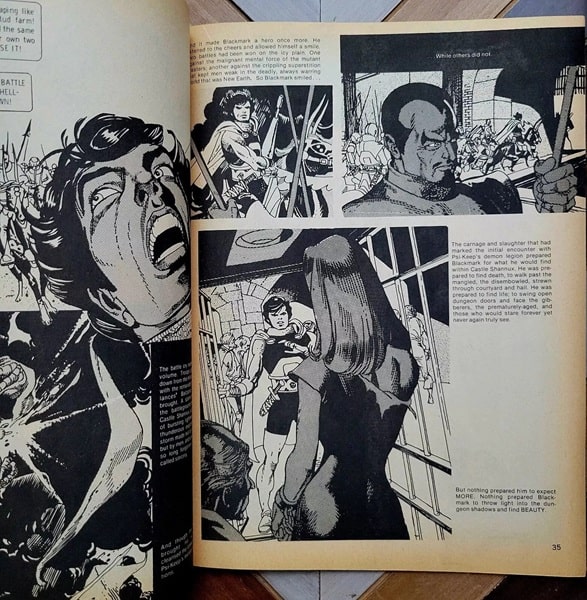
Interiors from the Marvel Preview #17. Art by Gil Kane
The art is great but the script is just wonderful. It’s way over the top sword and sorcery prose and I enjoyed it tremendously. Here’s a taste:
Blackmark awoke to shrill, inhuman cries. Dawn had brought new horror on flapping wings.
I highly recommend Blackmark to readers of S&P fiction.
Charles Gramlich administers The Swords & Planet League group on Facebook, where this post first appeared. His last article for Black Gate was The Sword & Planet Tales of Ralph Milne Farley.
Book Review: The Scorpion and the Night Blossom by Amélie Wen Zhao
I received a review copy from the publisher. This does not affect the contents of my review and all opinions are my own.
 The Scorpion and the Night Blossom by Amélie Wen Zhao
The Scorpion and the Night Blossom by Amélie Wen Zhao
Mogsy’s Rating: 3 of 5 stars
Genre: Young Adult, Fantasy
Series: Book 1 of The Three Realms Duology
Publisher: Delacorte Press (March 4, 2025)
Length: 400 pages
Author Information: Website
In The Scorpion and the Night Blossom by Amélie Wen Zhao, our protagonist Àn’yīng is a young warrior trained in a highly specialized kind of martial art which blends magic and sigils. In her world, survival demands strength, as the land is plagued by mó, a kind of soul-devouring demon that preys on mortals. It is a terrible reality that Àn’yīng knows all too well. Not long ago, her own family was torn apart when it was attacked by a powerful mó, which killed her father and left her month with an even crueler fate. Drained of her life force, the once vibrant woman is now an empty shell of her former self, slowly wasting away. Without intervention, Àn’yīng knows her mother will surely die.
However, hope comes in the form of the deadly Immortality Trials, a competition held by the immortals in their warded realm. The winner who manages to conquer the series of grueling tasks will receive a pill of eternal life, which Àn’yīng believes can save her mother. Determined to claim the prize, she embarks on the journey to enter the trials, knowing that countless other practitioners will be fighting against her for the same reward. One of them is Yu’chén, a handsome rival whose abilities clearly outshine Àn’yīng’s, but for some mysterious reason still agrees to form an alliance. As the competition heats up, with the trials becoming increasingly more demanding, our protagonist must decide whether she can trust her new teammate even as she finds herself torn between her hatred of demons and the undeniable pull she feels toward Yù’chén.
I really wish I could have rated The Scorpion and the Night Blossom more, and maybe if this hadn’t been the umpteenth fantasy romance story I’ve read about a heroine who must enter a life-or-death competition to retrieve some magical lifechanging trinket, I might have. But the current state of YA fiction can be boiled down to authors repurposing the same paint-by-numbers formula again and again, just with some new extra ingredient thrown in each time. In this case, we have a war-torn world, a series of dangerous trials, and a brooding love interest. The “something new” here is the Chinese-inspired mythology and the atmospheric descriptions of the immortal realm and the mó.
Hence I disagree with many of the other reviews here that the earlier parts of the novel were the strongest, while the rest of it was subpar. For me it was the opposite—the beginning was laughably predictable, clichéd, and boring. Àn’yīng’s tale was the same one I’ve read countless times before, only dressed up in a different package. I almost threw in the towel early, especially once she encountered Yù’chén, who was an interesting character, but their dynamic likewise follows a familiar pattern that brings nothing new to the table, right down to him giving our protagonist an annoyingly patronizing nickname.
And while I did appreciate the world-building, the story leans hard into Asian mythology tropes to paint readers a very superficial or kitschy version of the culture. I guess this truly is for the C-Drama girlies, as the dedication suggests–which, I confess, I am not. But if you are, then I can see The Scorpion and the Night Blossom being greatly appealing with its popcorn-y soap opera vibes. Plus, the final act does manage to shake things up. At this point, the plot finally steps away from its formulaic structure, delivering some unexpected twists and raising the stakes in a meaningful way. Although this renewed energy might have come too late in the book, I the last quarter left me cheering at how things were finally getting more unpredictable and interesting.
Overall, The Scorpion and the Night Blossom might have taken its sweet time freeing itself from the genre’s formulaic shackles, but eventually the predictable elements gave way to more imaginative storytelling. It’s a solid, if not groundbreaking, entry into YA fantasy. And though I wasn’t completely won over, the ending has me curious enough to see where the sequel takes the story, especially as this is the first half of a duology.
![]()
![]()
What Possessed You? — Part II
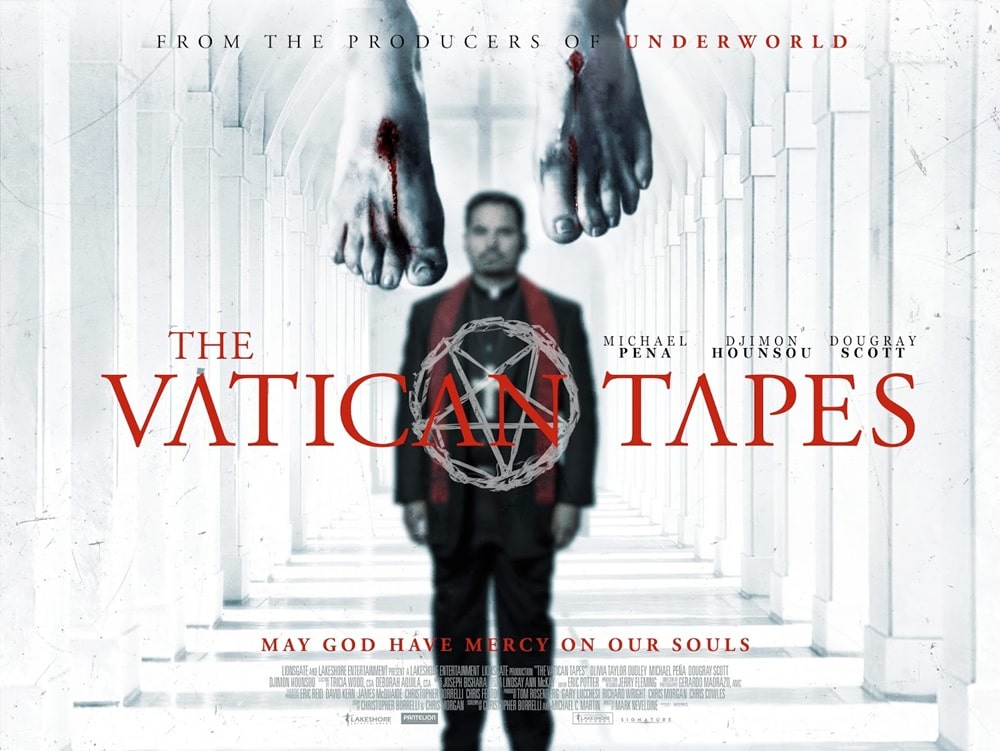 The Vatican Tapes (Lionsgate, July 24, 2015)
The Vatican Tapes (2015) – Prime
The Vatican Tapes (Lionsgate, July 24, 2015)
The Vatican Tapes (2015) – Prime
Imagine my excitement when I read that Mark Nelvedine (The Crank movies, Ghost Rider: Spirit of Vengeance, Gamer) had made an exorcism flick. This was bound to be bonkers!
Oh, foolish lamb that I am.
This limp rag of a horror film had all the bite of a blob fish, and half the appeal. In order to hit that sweet PG-13 demographic, the film has been neutered to such an extent that it was virtually blood-free. Any onscreen nastiness takes place with the victim’s back to the camera, and none of it is helped by illogical editing choices.
It’s a waste of talent too — Dougray Scott, Michael Peña and Djimon Hounsou plod through the proceedings with all the enthusiasm of a 7th-grader getting a vaccine shot, and the poor young woman who is the subject of their attention is played by Olivia Taylor Dudley, who I can only presume was asked if she could do a Kristen Stewart face.
Boring.
4/10
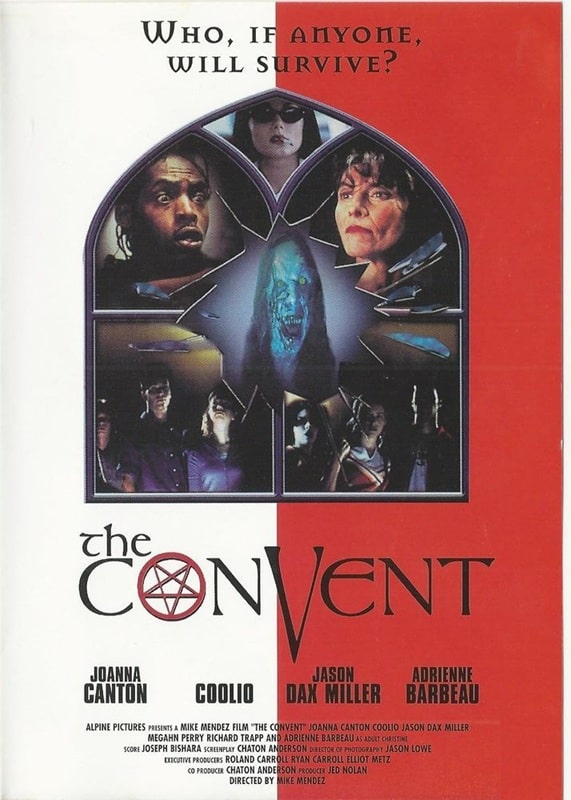
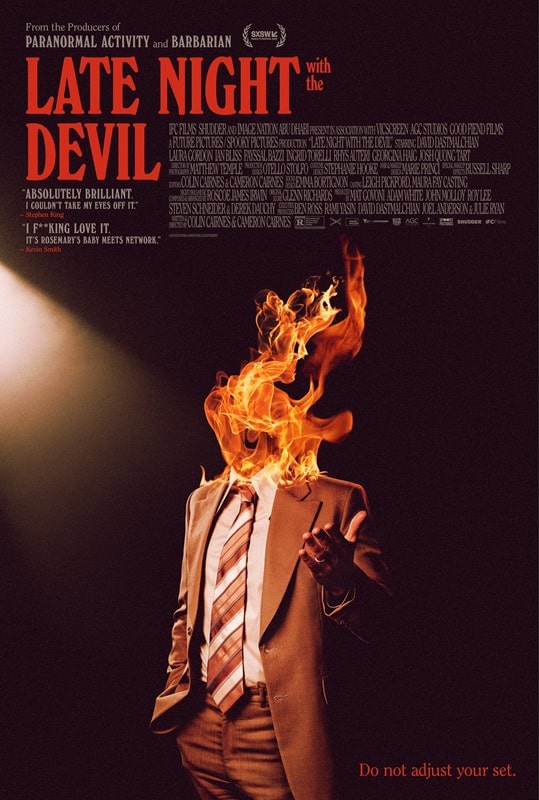
The Convent (Alpine Pictures, January 22, 2000)
and Late Night with the Devil (IFC Films/Shudder, March 22, 2024)
Some nuns and a priest are fussing around an alter when suddenly a cool-looking chick bursts in and starts whaling on them with a baseball bat, before finishing them off with a shotgun.
Okay movie, you have my attention.
Unfortunately, the rest of the flick doesn’t live up to this intro, although it’s a fairly fun attempt to conjure up the daft delights of 80s demon films. A bunch of frat yoots are determined to break into an old, deserted convent and tag it before the other frat houses. They are also hoping to smoke some of the devil’s leaf, and perhaps partake in some heavy fondling. Unfortunately, they inadvertently awaken the spirits of unholy nuns, who promptly possess them and go on a rampage. It’s up to the original nun-knocker from 20 years ago, Adrienne Barbeau, to go all Terminator 2 on the holy horrors.
It’s very silly, occasionally messy, and mostly neon, as the demons were all shot under UV lights.
Megahn Perry was a highlight as Mo, a goth who totally looks like a 19-yr-old Olivia Colman in black lipstick. She was good, as was a Bill Mosely cameo, and Coolio acting ‘extremely’ normal.
It’s not brilliant, but it’s not awful either.
6/10
Late Night with the Devil (2024) – Prime (Shudder)Let’s get the drama out of the way first. Lots of folks over on Xitter claimed they were boycotting this film due to its (minimal) use of A.I. images. I appreciate their stance, however, it’s difficult as all hell to get an indie horror made these days (exhibit A: the several hundred production logos at the beginning), and boycotting this one just hurts the hundreds of other crew-members who had no hand in the decision.
Sure, go ahead and be very disappointed, but to boycott it means you won’t get to see a terrific concept nicely put together.
Current horror darling, David Dastmalchian, is perfect in the role of a late-night host who can’t quite match the ratings of the great Johnny Carson (this is set in 1977). His beloved wife has recently died, the sweeps are nigh, and he’s desperate for a decent show. Tonight’s Halloween spectacular might be the last gasp for Night Owls. Jack Delroy, along with his sidekick, Gus, have invited a half-rate psychic, a James Randi type, and the subjects of possession research, June, the researcher, and Lily, the possessed. As you might guess, it all goes horribly wrong.
The film opens with narration (Michael Ironside!) to bring us up to speed, and then presents the show in its entirety, threaded with behind the scene footage. I loved the concept and the slow build-up, and the general aesthetic was spot on. I’ve seen a lot of reviews from yoots saying it’s ‘mid’, but I think it really helps if you grew up watching the late shows of the 70s and 80s.
Recommended.
9/10
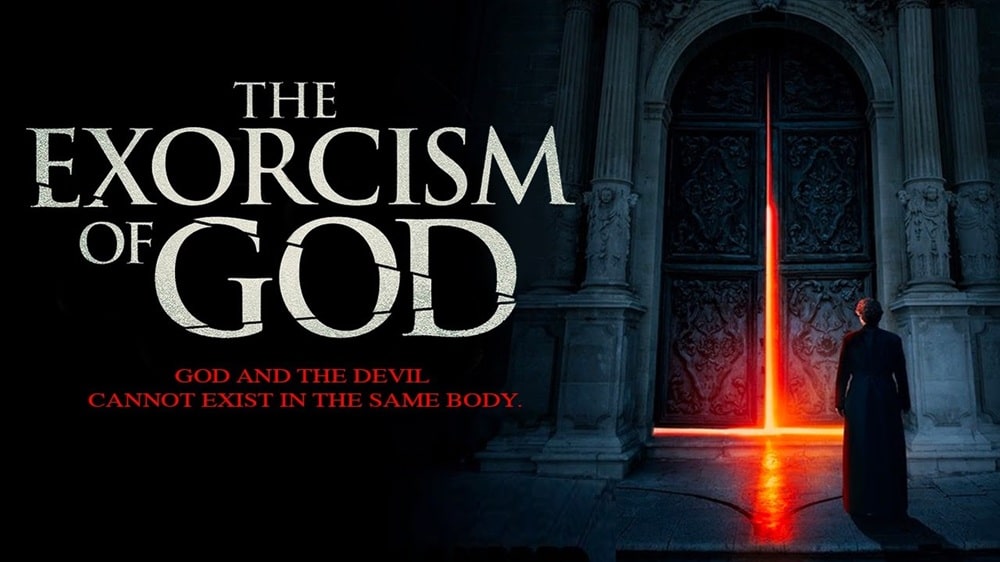 The Exorcism of God (Saban Films, September 27, 2021)
The Exorcism of God (2021) – Tubi
The Exorcism of God (Saban Films, September 27, 2021)
The Exorcism of God (2021) – Tubi
I wasn’t expecting much from this Mexican/US production, mostly because I’d never heard of it, but it was a pleasant surprise.
The director, Alejandro Hidalgo, get all of the cliches out of the way in the first few minutes, including a totally unsubtle Exorcist shot, yellow eyes, shaky beds, psychosexual taunting, inexperienced priest, etc etc. However, this story has more to offer than the usual schtick we get in these films.
This time, the priest hides a very dark secret that stems from the initial exorcism, a secret that rears up again 18 years later when he is exalted as a ‘saint’ for saving a Mexican village. Father Peter is a really interesting, conflicted character, and I liked Will Beinbrink’s portrayal of the tortured soul very much. In fact, it’s well acted all round and beautifully shot, although it relies a bit too heavily on jump scares, which were unnecessary.
Plenty of atmosphere, lots of creepiness and a genuinely ghastly plot. Recommended.
8/10
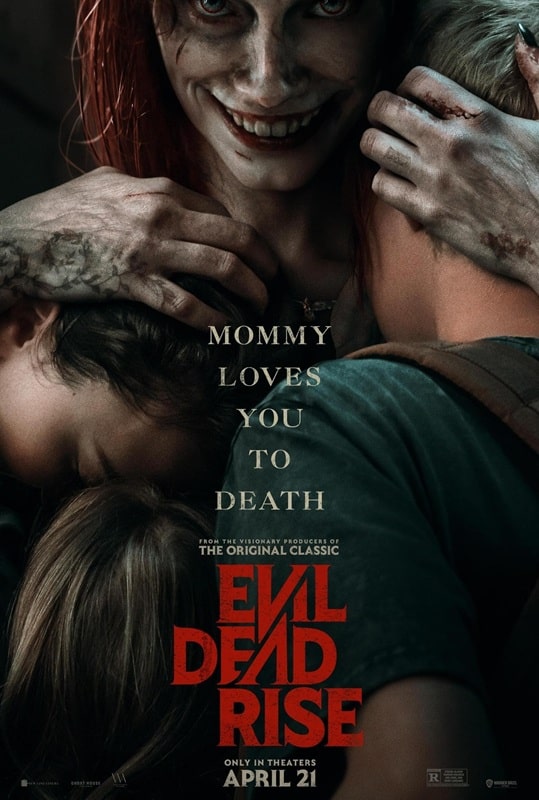
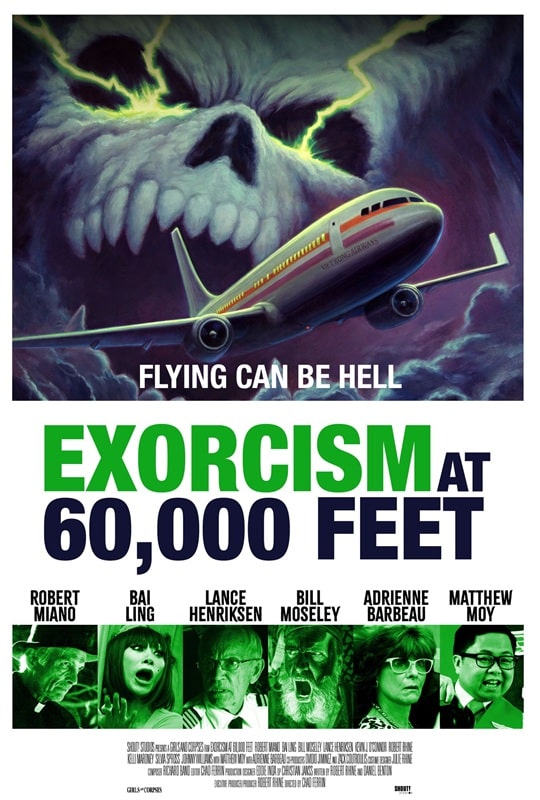
Evil Dead Rise (Warner Bros. Pictures, April 21, 2023)
and Exorcism at 60,000 Feet (Shout! Studios, August 9, 2019)
Curse me and my self-imposed rules. I wanted to watch this one last year, but I knew I was doing this possession project after the Tubi one, so I had to wait. It was worth it!
If Fede Álvarez’s Evil Dead in 2013 was the gritty embodiment of Raimi’s original, then this follow-up, written and directed by Lee Cronin, is a pitch-perfect take on the sensibilities of Evil Dead II. You can tell that Raimi, Tapert and Campbell were part of the production, because even though Rises is darker and bloodier, as befits a modern version, it is struck through with subversive humour. That’s the weird thing about the Evil Dead franchise — I can’t think of another film series that I gleefully watch as it inflicts so much ghastliness on decent people . It’s somewhat perverse.
The theme and storyline, with its focus on family, is quite disturbing, and yet there are several sequences that had me silently whooping; the carnage watched through a peephole, finding the right pot size to put a deadite down, and an eyeball gag straight out of the Raimi playbook. Once all the possessed are chanting ‘dead by dawn!’ and souls are threatened with a good swallowing, you know that the good old days are back.
That’s not to take anything away away from Cronin. I think he’s done a stellar job here; its a well-crafted story and it looks great. The stand-out for me was Lily Sullivan, and I would totally watch the hell out of an Evil Dead series featuring her chainsaw-toting Beth.
Brilliant stuff.
10/10
Exorcism at 60,000 Feet (2019) – TubiA priest (Father Romero), played very well by Robert Miano, turns up at a house, poses à la The Exorcist at the front door, barges in and shoots a demon in the head (Bill Mosely, shaggy as ever) with a crucifix gun. So far, so good. The homeowner snaps out of his own demonic possession, sees his dead wife and screams in anguish. Then he wanders off into the shadows, looking for the rest of his family, crying ‘Oh God’ every time he finds one, his voice getting more horrified with each new discovery.
Utterly disturbing and heartbreaking, and yet it is played for the darkest of laughs, and God help me, I smiled. Then, as the priest manhandles the demon’s body into the back of a hearse, Richard Band kicks in with one of his patented sound-alike scores, and blow me down if it isn’t the music from Airplane! So this is where we are going.
What follows is a uniquely offensive exercise in attempted Zucker Brothers style comedy on a trans-pacific flight (via Viet Kong, no less) with some demonic gore thrown in. For the most part, the over-the-top comedy doesn’t work (I wish they had stuck to the blacker than pitch humor of the opening), but the ludicrousness belts along lickety-split, and there are definitely a couple of moments that made me chortle.
Here’s a list of the crew and passengers just in case you think they missed out on an opportunity to upset anyone.
- Captain Houdee (aha!) the alcoholic pilot played by Lance Henrikson made up as Sully,
- Kevin J. O’Conner (who I’ve missed terribly) as the dozing co-pilot,
- Bai Ling (The Crow) and Matthew Moy (2 Broke Girls) as the racially stereotyped flight crew (Ling’s character is transsexual to boot, which wasn’t handled as badly as you might expect, but still the butt of a few jokes),
- A woman who has a golden glow emanating from her hoohah like Marsellus Wallace’s briefcase,
- An adult dwarf with Tourette’s who breastfeeds off Kelly Maroney (Night of the Comet),
- A Hasidic Jew played by Robert Rhine (one of the writers),
- A body builder,
- A pregnant woman,
- A guy who takes advantage of the pregnant woman while she is unconscious (really?),
- Adrienne Barbeau with a dead service dog,
- A deaf and mute guy who does nothing,
- A pair of nuns who get naked and then get it on,
- A Sopranos extra,
- A Tibetan holy man,
- A messy mile high club attempt,
- tampon gags,
- fart gags,
- and Bai Ling caked in makeup being told to crank it up to 26 and scream every line.
There’s also pea soup, Twilight Zone references and plenty of gore.
It would be easy to dismiss this one, but I think it’s perfect for the very very drunk or very very stoned, or for those with no moral hang-ups, and at the risk of eternal damnation, I’m going to recommend it just to you. You know who you are.
6/10
Previous Murkey Movie surveys from Neil Baker include:
What Possessed You? — Part 1
Fan of the Cave Bear
There, Wolves
What a Croc
Prehistrionics
Jumping the Shark
Alien Overlords
Biggus Footus
I Like Big Bugs and I Cannot Lie
The Weird, Weird West
Warrior Women Watch-a-thon
Neil Baker’s last article for us was Part I of What Possessed You? Neil spends his days watching dodgy movies, most of them terrible, in the hope that you might be inspired to watch them too. He is often asked why he doesn’t watch ‘proper’ films, and he honestly doesn’t have a good answer. He is an author, illustrator, outdoor educator and owner of April Moon Books (AprilMoonBooks.com).
Free Your Mind! 6 Novels That Spark Creativity & Transformation
The power of novels, the power of reading, seems immeasurable. The books we read and…
The post Free Your Mind! 6 Novels That Spark Creativity & Transformation appeared first on LitStack.
WHEN THE MOON HITS YOUR EYE by John Scalzi
Tor Doubles: An Overview
 Tor Doubles
Tor Doubles
In October of 1988, Tor Books released the first Tor Double, a volume that reprinted Arthur C. Clarke’s 1971 novella Meeting with Medusa with Kim Stanley Robinson’s novella Green Mars. Over the next thirty-five months, they would publish a total of thirty-six books in the series.
In general, there was little to link the two short stories that were published in each volume, although in 1990, Tor experimented with the publication of four Tor Doubles that included a classic story, by authors including C.L. Moore, L. Sprague de Camp, Leigh Brackett, and Roger Zelazny, with original stories that were set in the same world. The following year would see addition original stories published in the series.
Similarly, most of the volumes contained stories by two different authors, however four of the books published in 1991 were single author collections, with two stories each by Gordon R. Dickson, Mike Resnick, Damon Knight, and Fritz Leiber.
Modeled after the Ace Doubles series, the books were initially published in a dos-a-dos format, with each story getting its own cover and bound upside down in relation to the other book, so neither story was first (although the presence of an ISBN code on one side had a tendency to make it feel like the “back” of the book). The four volumes that included sequels were published with a single cover and beginning with volume 27, which included Orson Scott Card’s Eye for Eye and Lloyd Biggle, Jr.’s The Tunesmith, all the volumes were published in the more traditional format.
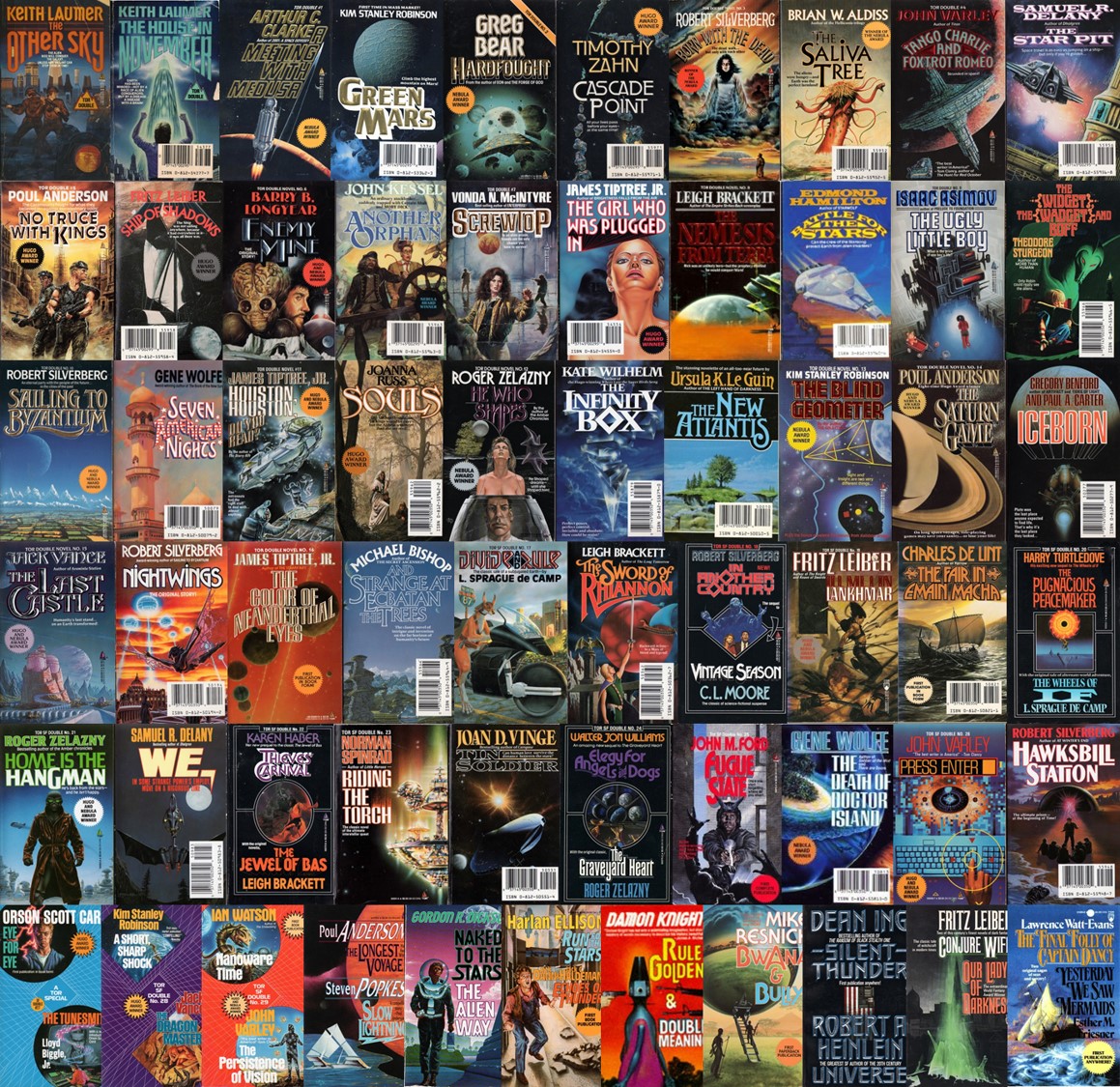 A Mosaic of Tor Doubles covers
A Mosaic of Tor Doubles covers
The Clarke/Robinson volume was not, actually the first Tor Double, although it states “Tor Double #1” on the cover for the Clarke story. In 1981, Tor published Keith Laumer’s novel The House in November with a “special bonus: complete short novel” The Other Sky as part of their “Jim Baen Presents” series When the book was reprinted in 1985, the two stories were printed in the dos-a-dos format with the words “Tor Double” appearing on both sides.
Although the final volume in the series, a collection of Fritz Leiber’s novels Conjure Wife and Our Lady of Darkness was published in August of 1991, there was at least one more volume scheduled to see print, although it was never published. Instead, Esther M. Friesner’s Yesterday, We Saw Mermaids was published as a stand-alone novel by Tor in 1992 and Lawrence Watt-Evans’ The Final Folly of Captain Dancy was first published by Tor at the back of their printing of his novel The Rebirth of Wonder (along with an excerpt for Watt-Evans and Friesner’s collaboration Split Heirs) and was later included in his collection Crosstime Traffic.
The series includes works by 51 authors (including two collaborations). Sixteen authors are represented by multiple stories, with eight appearing twice (half of those in single author volumes), six appearing three times, Fritz Leiber having four stories in the series (once in a single author volume), and Robert Silverberg having five stories.
Although there were only a handful of original stories published in the Tor Doubles series, many of the works selected to be reprinted were award nominees and winners. The series included 33 Hugo nominated works and 17 winners and 27 Nebula nominated stories and 16 winners. Robinson’s A Short Sharp Shock was nominated for a Hugo Award for the year it appeared in the series, although it had previously been published by Mark V. Zeising and Asimov’s.
Over the next thirty-nine weeks, I intend to look at the books published (or not published, as the case may be) as part of this series.
 Steven H Silver is a twenty-time Hugo Award nominee and was the publisher of the Hugo-nominated fanzine Argentus as well as the editor and publisher of ISFiC Press for eight years. He has also edited books for DAW, NESFA Press, and ZNB. His most recent anthology is Alternate Peace and his novel After Hastings was published in 2020. Steven has chaired the first Midwest Construction, Windycon three times, and the SFWA Nebula Conference numerous times. He was programming chair for Chicon 2000 and Vice Chair of Chicon 7.
Steven H Silver is a twenty-time Hugo Award nominee and was the publisher of the Hugo-nominated fanzine Argentus as well as the editor and publisher of ISFiC Press for eight years. He has also edited books for DAW, NESFA Press, and ZNB. His most recent anthology is Alternate Peace and his novel After Hastings was published in 2020. Steven has chaired the first Midwest Construction, Windycon three times, and the SFWA Nebula Conference numerous times. He was programming chair for Chicon 2000 and Vice Chair of Chicon 7.
Goth Chick News: The Night We Podded Out
 They Mostly Pod Out at Night, Mostly, hosted by Graveyard and Salem
They Mostly Pod Out at Night, Mostly, hosted by Graveyard and Salem
One of the best parts of my Black Gate side hustle is the cool people we get to meet, and there’s nothing more exciting than connecting with those who are most definitely “our people.” I am embarrassed to admit that the Fall Days of the Dead show in Chicago last November was my first encounter with the geniuses behind the podcast They Mostly Pod Out at Night, Mostly, who go by the monikers Graveyard and Salem. And after all, who doesn’t love an Aliens reference?
They Mostly Pod Out at Night, Mostly is a weekly podcast dedicated to all things horror. Each episode features in-depth discussions, covering a range of topics from classic and contemporary horror films to broader themes within the genre. The hosts provide insightful analysis, engaging reviews, and lively conversations that appeal to both casual viewers and die-hard horror enthusiasts. Their passion for horror is on full display as they explore the intricacies of various movies, offering listeners a comprehensive understanding of the genre’s evolution and impact.
Since meeting them in November I’ve become a regular listener, discovering yet another dark and intriguing corner of the horror subculture, and last night I had the honor of being a guest.
Honestly, I had mixed feelings about doing this. Though I loved what I had seen since becoming a fan of TMPOaNM, I am far more comfortable behind the keyboard than in front of a webcam. I have my own horrors of freezing up or saying something stupid, not to mention the fact that for all my many years at Black Gate I have determinedly remained out of any pictures or videos associated with Goth Chick News.
Still, the draw was strong, and the host “Graveyard” (aka Matt Van Bodegraven) went to great lengths to make me feel comfortable. He had done his homework on Black Gate and Goth Chick News so the whole event really felt like “coffee between friends” as he promised.
Check it…
For his part, Van Bodegraven is a multifaceted figure in the indie horror genre, recognized for his work as a writer, director, actor, as well as podcast creator and co-host. In the realm of filmmaking, Van Bodegraven has contributed to several projects. He is known for The Murder of the Monster (2024), The Ruck March (2025) as well as Vampyre and Tahoe Joe 3: Concrete Wilderness both in pre-production.
He is also the producer of the upcoming ‘found footage’ horror film The Fairfield County Four, directed and written by Joshua Brucker for Horror Dadz Productions.
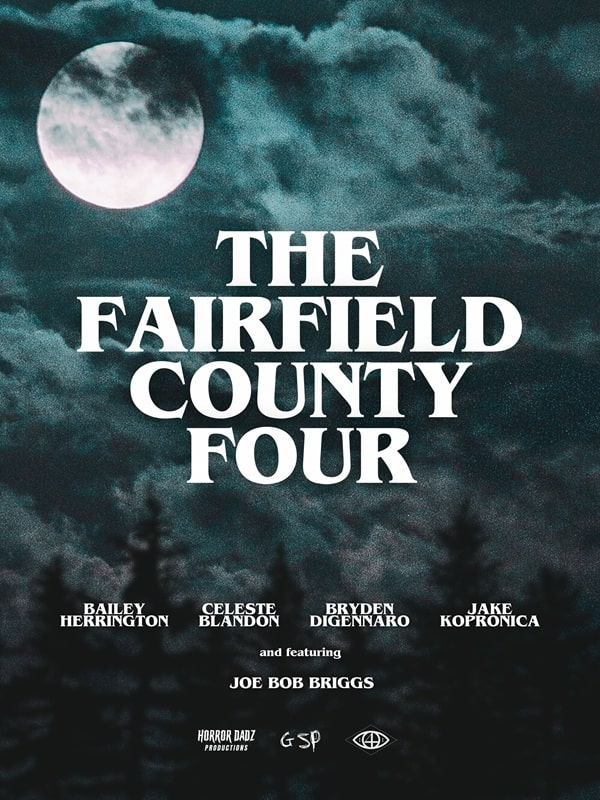 The Fairfield County Four (Eye4Eye Productions/Gray Sky Pictures)
The Fairfield County Four (Eye4Eye Productions/Gray Sky Pictures)
The narrative follows four individuals — Emma Grove, Amy Hanson, Randy Farris, and Peter Moore — as they venture into the Connecticut woods to investigate the legend of the Wolf of Fairfield County. Their subsequent disappearance leads to the discovery of their recovered footage, unveiling the chilling events they encountered.
As of now, The Fairfield County Four is in pre-production, with filming anticipated to commence in April 2025 and a release date yet to be announced. However, Van Bodegraven did promise to keep me updated so I can tell you all about the process of bringing an indie film to life. For a glimpse into the eerie atmosphere, you can watch the campaign teaser below:
While we wait, definitely check out They Mostly Pod Out at Night, Mostly, for entertaining insights into the horror genre. A huge thank you to Graveyard and Salem for creating such a memorable experience, and one that is truly unique in the Goth Chick universe.
Black Gate photog Chris Z and I are off to the spring version of Days of the Dead on Friday, so watch this space.
Spotlight on “The Fantasies of Future Things” by Doug Jones
In The Fantasies of Future Things, two men in Atlanta reconcile their human dignity against…
The post Spotlight on “The Fantasies of Future Things” by Doug Jones appeared first on LitStack.
7 Author Shoutouts | Authors We Love To Recommend
Here are 7 Author Shoutouts for this week. Find your favorite author or discover and…
The post 7 Author Shoutouts | Authors We Love To Recommend appeared first on LitStack.
You Are Cordially Invited to a Dinner Party in Hell: The Exterminating Angel
Social interaction is a minefield, isn’t it? Whether it’s gathering with the family for the holidays, relating to people at the workplace, or making small talk with the checker at the supermarket, any encounter with other people, no matter how casual or seemingly benign, is fraught with uncertainty and even, sometimes, menace. That may be why such interactions have so often been depicted as a form of combat. (It may also be why the trend towards “contactless” social transactions that reached warp speed with the advent of COVID isn’t going anywhere, but just continues to gain ground even as the Coronavirus era recedes.)
Of all the opportunities for social victory and defeat, triumph and humiliation, the party may be the most hazardous, but no party has ever been such an ordeal as the one endured by the hapless dinner guests in Luis Buñuel’s merciless 1962 nightmare, The Exterminating Angel (in its original Spanish, El ángel exterminador).
Filmed in Mexico and set in a “wealthy district” in an unnamed country (Roger Ebert declares that it’s Spain and that the movie is an attack on the regime of Francisco Franco, but I know of no statement by Buñuel that places the film so specifically or that defines its meaning so narrowly), The Exterminating Angel is the blackest of black comedies; I have no doubt that it would have made the chap who invented the rack and thumbscrews giggle uncontrollably.
Buñuel was one of the original cinematic surrealists, beginning his career in the mid 1920’s and earning his first fame — or notoriety — with two films made in collaboration with Salvador Dalí: that bane of unsuspecting college film students, Un Chien Andalou (1929), with its sudden, shock shot of an eye being sliced open by a razor blade (it was actually a cow’s eye) and 1930’s L’Age d’Or, which provoked scandal and rioting with its unbridled attacks on the Catholic Church.
Buñuel spent the next three decades bouncing between his native Spain, the United States, Mexico, and France, all the while producing work that was unconventional, to say the least. This period culminated with The Exterminating Angel, a film which inaugurated his final and greatest phase, a period which saw him produce his subversive masterpieces Belle de Jour, The Discreet Charm of the Bourgeoisie, The Phantom of Liberty, and That Obscure Object of Desire.
The Exterminating Angel opens on a beautiful and tranquil night on the Calle de la Providencia, an elegant, upper-class street, as Edmundo Nóbile (Enrique Rambal) and his wife Lucia (Lucy Gallardo) return from an evening at the opera, bringing with them seventeen guests, artists and professional people whom they have invited to join them for a post-performance dinner party. As the gay and sparkling group walks in the luxurious mansion’s front door, the Nóbile’s large domestic staff is rushing out the back; spurred by some obscure impulse that they scarcely understand, cooks, maids, and servers all flee into the night with no intention of ever returning.
Soon the only ones left are several sheep and a bear that the hostess is planning to use for some strange and never-to-be-enacted entertainment, and the Nóbile’s butler, Julio (Claudio Brook), whose total identification with his employers apparently inoculates him against the “running sickness” that is affecting the other servants.
The festivities begin in the time-honored way — the guests sit around the huge table, and oozing well-mannered malice, lean toward their neighbors and cheerfully gossip about the other people at the party, the sexual proclivities and perversions of their “friends” being an especially popular topic. (Other people’s medical conditions are also freely discussed, and an army colonel casually confides to the woman next to him that he doesn’t give a damn about the Fatherland he ostensibly serves.)
After Julio has served the meal, the group repairs to the spacious drawing room, which is only separated from the dining room by an open archway (which looks suspiciously like a theater proscenium), where one of the guests entertains everyone by playing a classical piano piece. More socializing ensues, masks of politesse and good breeding barely concealing the contempt and jealousy that lie beneath. (More than the usual spite and backbiting are hiding behind the polished social surface, however; during the piano recital, a woman opens her purse and has to dig beneath its other contents to reach her handkerchief. What has this elegant society lady brought with her? Lipstick and a compact? No, the feathers and feet of a chicken, the elements of a Cabbalistic ritual.) Finally, as the hour grows late, the partygoers begin to gather coats and purses, in preparation for their leave-taking. Only…
No one leaves. A few people hesitantly walk up to the archway leading to the dining room, which they must pass through in order to reach the cavernous entry hall and the front door, but they pause at the threshold, seemingly unable to take a step further. They stand bemused, expressions of confusion and even fear flickering across their faces, like skydivers at the door of an airplane who suddenly realize that they’re not wearing parachutes (or people standing at the brink of “The undiscovered country from whose bourn / No traveler returns”, perhaps?) They mutter a few weak justifications for staying just a little longer, and retreat back into the drawing room.
It soon becomes obvious that no one is going to leave, as people settle down for the night on couches (the lucky ones), in chairs, or on the floor. At first, the Nóbiles are outraged at this shocking breach of etiquette, but when they realize that they too are powerless to walk out of the drawing room, they find their own places to bed down for the night.
In the morning, Julio wheels in a tray with some breakfast… and finds that he too cannot leave the drawing room, and the new day has brought no change for anyone else, either — no one can leave. The group fumblingly tries to figure out what is happening; almost as frustrating as their inability to leave the room is their inability to understand why they cannot leave the room. Dr. Carlos Conde (Augusto Benedicio), the party’s leading rationalist, counsels that only “dispassionate analysis” can solve the problem, but no one seems much interested in that approach, not that there’s any indication that it would work if they tried it. In the meantime, people are making what arrangements they can — a closet in which large ornamental vases are stored becomes the de facto bathroom, and a pair of young lovers finds another closet where they can be alone; Buñuel allows you to imagine for yourself exactly what they’re up to in there.
As the days pass, territory is staked out, accusations are made and recriminations are hurled, and hunger grows. The lower-class Julio takes to eating paper as he did when a schoolboy and recommends it to the others; it’s better than nothing. An ornamental axe is used to chop through the wall to get to a water pipe; anarchy briefly reigns when water spurts from the pipe, but order is quickly restored — ladies first.
As the prisoners wonder why no one has come to rescue them, we are able to see outside the mansion, where police and crowds of onlookers have gathered, powerless; the same strange force that prevents exit also prevents entrance.
Inside, some react with hysteria, some with lethargy; some fight to maintain hope, some give way to despair. Some people cling to rationality while others call on occult powers, seek help through Masonic rituals, or promise a special mass for their deliverance. All the while, death is a force to be reckoned with inside the house just as it on the outside; lacking his medication, one of the older guests who was in poor health dies after the first night. (Just before the end, he mutters, “I’m happy I won’t see the extermination.”) They put him in the lovers’ closet, which is only fitting, as the pair — who were to be married later in the week — eventually commit suicide together in their trysting place.
An overpowering stench from the improvised lavatory (and morgue) and sweaty, unwashed bodies soon makes the air in the crowded room fetid and foul, and though they can toss their trash into the dining room (despite not being able to enter it), after a few days the drawing room is a filthy, cluttered shambles. Under these conditions, the thin veneer of civilization flakes off as people grate against each other physically and emotionally. Insults and fists fly, and the last tattered remnants of civility begin to disintegrate.
When the erstwhile members of the upper crust are approaching the last extremity, starvation is fended off when the animals escape from the kitchen. While the bear roams the upper floors, emitting eerie moans and cries, the sheep providentially trot into the drawing room; whatever sardonic divinity presides over this hell, he is at least willing to provide manna for his erring children. A fire is made from smashed furniture and soon roast mutton is being devoured by people indistinguishable from their primitive ancestors, who also squatted around open fires, eagerly tearing meat off of bones with their teeth.
Full stomachs only sharpen the edge of the guests’ desire to escape their prison, however, and a group of women (among them the devotee of Kabbalah) begin to push the idea that only a sacrifice — a human one — will free them. Who should the victim be? Who better than their host, the man who got them all into this mess with his impertinent dinner party invitation, Edmundo Nóbile? (Who, it must be said, has lived up to his name by comporting himself with more dignity and self-control than almost anyone else.) Some oppose this move, the ever-reasonable doctor most prominent among them (for his pains, someone shouts that they should get rid of him too) and the two sides, those for human sacrifice and those against it, wind up wrestling in the middle of the ruined room.
Just as the pro-sacrifice faction seems to be getting the upper hand and someone is reaching for the same knife that was used on the sheep, Nóbile tells them all that it won’t be necessary — taking a pistol from a drawer, he says that he can easily solve their problem for them. But before he can use the gun on himself, one of the women, Leticia (the wonderful Silvia Pinal, a Buñuel regular) tells everyone to stop where they are — she has realized that are all in the exact same places they occupied when the nightmare began, countless ages ago. If everything is repeated — positions, music, words, gestures, might that not free them from this spell? (Buñuel has slyly prepared for this by repeating several shots in the film; for instance, the shot of the guests first entering the house, along with the accompanying dialogue, is shown twice in succession. The only difference is a slightly different camera angle. Buñuel claimed that there are about twenty of these repetitions in the film.)
Everyone (except the dead) exactly repositions themselves as they were that unlucky night. The last few bars of the piano piece are played, followed by the same words that were spoken, and the doors of the sorcerer’s castle (“after all, this is not a sorcerer’s castle” someone rashly declared after the first night) are miraculously unlocked, and the captives are free. They immediately sense that whatever was restraining them has disappeared, and they ecstatically rush out the front door to meet the people waiting outside, who are also now freed to run to meet them. (Even the servants are there, seemingly drawn back by the same force that impelled them to run away.)
The curse has been lifted and the evil dream can fade from memory as all dreams do.
Well, if you think that, you don’t know Luis Buñuel. Of course, this deliverance is illusory; the torture master has withdrawn the knife only to reinsert it, merely repositioning the blade for the final, fatal twist.
The last scene of The Exterminating Angel shows all the dinner guests, again clean and fresh, immaculately groomed and expensively dressed, gathered together in church along with hundreds of other worshippers, attending the special mass that they promised to celebrate if they were saved from their ordeal.
As the service ends and the bells toll, the priests start to walk out of the nave… and stop.
They cannot leave, and neither can anyone else; they all stand paralyzed, new captives and old alike unable to walk through the door in front of them, and not long afterward, as panic mounts inside the church, shouts are heard from the outside, where mounted police are clashing with a large crowd. Rioters or the merely curious? Does it matter? The disorder and chaos that leaked from the human heart into an elegant upper-class drawing room has now overflowed into the wider world, spreading through the streets like a plague.
But have no fear; the degraded human race, corrupt and corrupting, will be looked after. The final shot of this extraordinary film shows a large flock of sheep, placidly trotting through the doors of the church while the city outside echoes with screams and gunfire. FIN.
The Exterminating Angel is one of the greatest films ever made, bursting with resonant, unforgettably suggestive images — a bear climbing the pillar of a chandeliered hall, crying with what sounds like anguish; sheep roaming up the wide stairways and through the deserted rooms of a richly-appointed mansion; ragged people listlessly standing around in the shattered ruins of what was once an elegant drawing room, hopeless as damned souls in hell; Nóbile and Leticia sitting with a sheep between them — as Leticia blindfolds the animal and hands Nóbile a knife, the doomed creature tenderly lays its head on its executioner’s shoulder. (Buñuel later said he wished that he had left the animals out of the film, because then he would have been able to make his people resort to cannibalism. Fun guy, that Luis.) Though there are a few other works it brings to mind (Jean-Paul Sartre’s play No Exit, which came before the film, and J.G. Ballard’s novel High Rise and Jean–Luc Godard’s film Weekend, which came after) The Exterminating Angel is very much its own thing, a bracingly original achievement, a ticking time bomb placed under the padded chairs of the complacent.
What is the meaning of this savage allegory? Does it say that hypocrisy and malice constitute the irreducible baselines of human behavior? That the comfort and luxury that we almost all desire are nothing but degrading prisons? That life is defined by its frustrations? (Later, in The Discreet Charm of the Bourgeoisie, Buñuel plays a variation on the impediment faced in the earlier film; in Discreet Charm the people of the privileged class can go where they want, but every time they sit down to dinner, something prevents them from eating; they are never allowed to complete a meal.) Does it say that the world is nothing but a desert island where we are all shipwrecked? (In 1954, Buñuel had filmed his own version of Robinson Crusoe.) Is it about the loss of belief that can suddenly undermine the most powerful regime? (Buñuel didn’t live to see the Soviet Union collapse overnight, but if he had, I can’t imagine that he would have been very surprised.) Is it a parody of the Book of Exodus? (When the Destroying Angel passed over Egypt, the Children of Israel couldn’t leave their houses.) Is it a monument to misanthropy, a horror movie in which the monsters are other people?
Hell, maybe if you could have administered a truth serum to the cagey Spaniard, he would have told you that the movie isn’t about the people at all — it’s about the sheep.
All respect to Roger Ebert, but whatever this singular film is, it has to be more than just a declaration that under Francisco Franco, Spain was oppressed by a corrupt and evil government. We know that already, and having grasped that fact, there’s nothing more to add. But The Exterminating Angel is deep enough to convey that specific meaning and many, many more. Like all the greatest works of art, it’s almost limitlessly expansive; it contains more and means more every time you see it. (Watching in 2025, it’s hard not to attach a meaning to it that it couldn’t have had for its director or original audience in 1962; the film works perfectly as an allegory of the anxiety and isolation of the COVID era.)
In watching this eccentric masterpiece, you may find yourself appalled, shocked into bitter laughter, filled with pity and dismay at the irremediably tainted human race and its benighted condition. What you won’t be is bored or dismissive; you’ll have no doubt that you’ve seen something absolutely unique and uncomfortably pertinent to the human dilemma, and you’ll find yourself turning it over and over in your mind long after the final credits have rolled, looking for a way out.
Really, what more could we poor, stupid sheep ask for?
Thomas Parker is a native Southern Californian and a lifelong science fiction, fantasy, and mystery fan. When not corrupting the next generation as a fourth grade teacher, he collects Roger Corman movies, Silver Age comic books, Ace doubles, and despairing looks from his wife. His last article for us was The Beating Heart of Science Fiction: Poul Anderson and Tau Zero


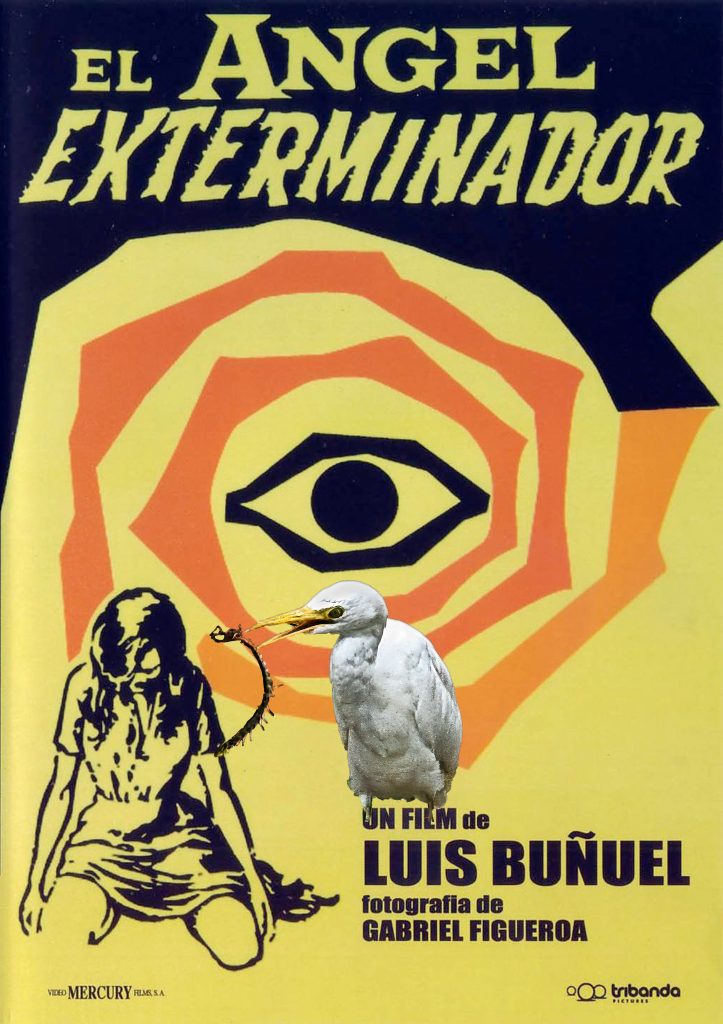



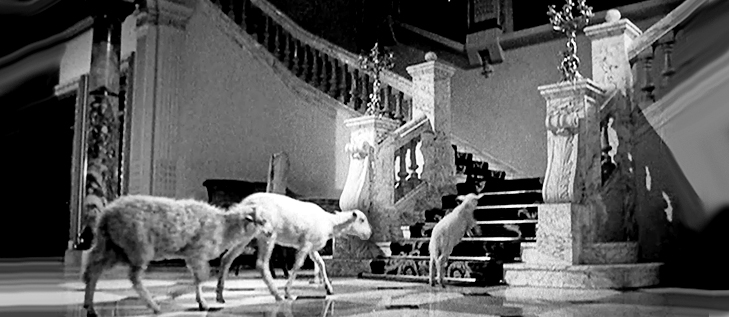
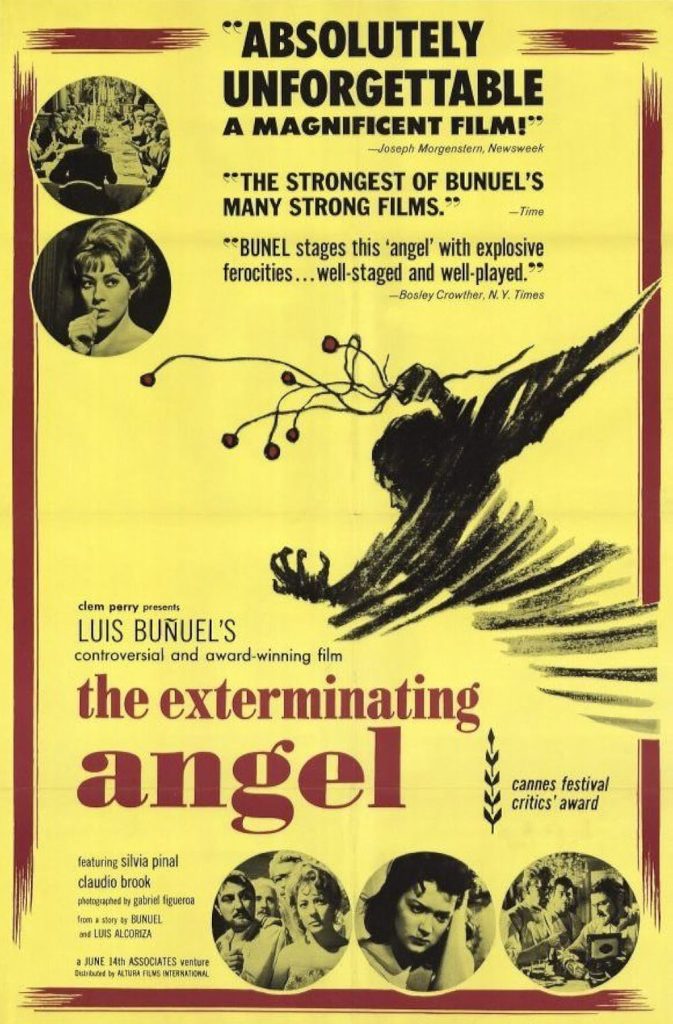

Recent comments